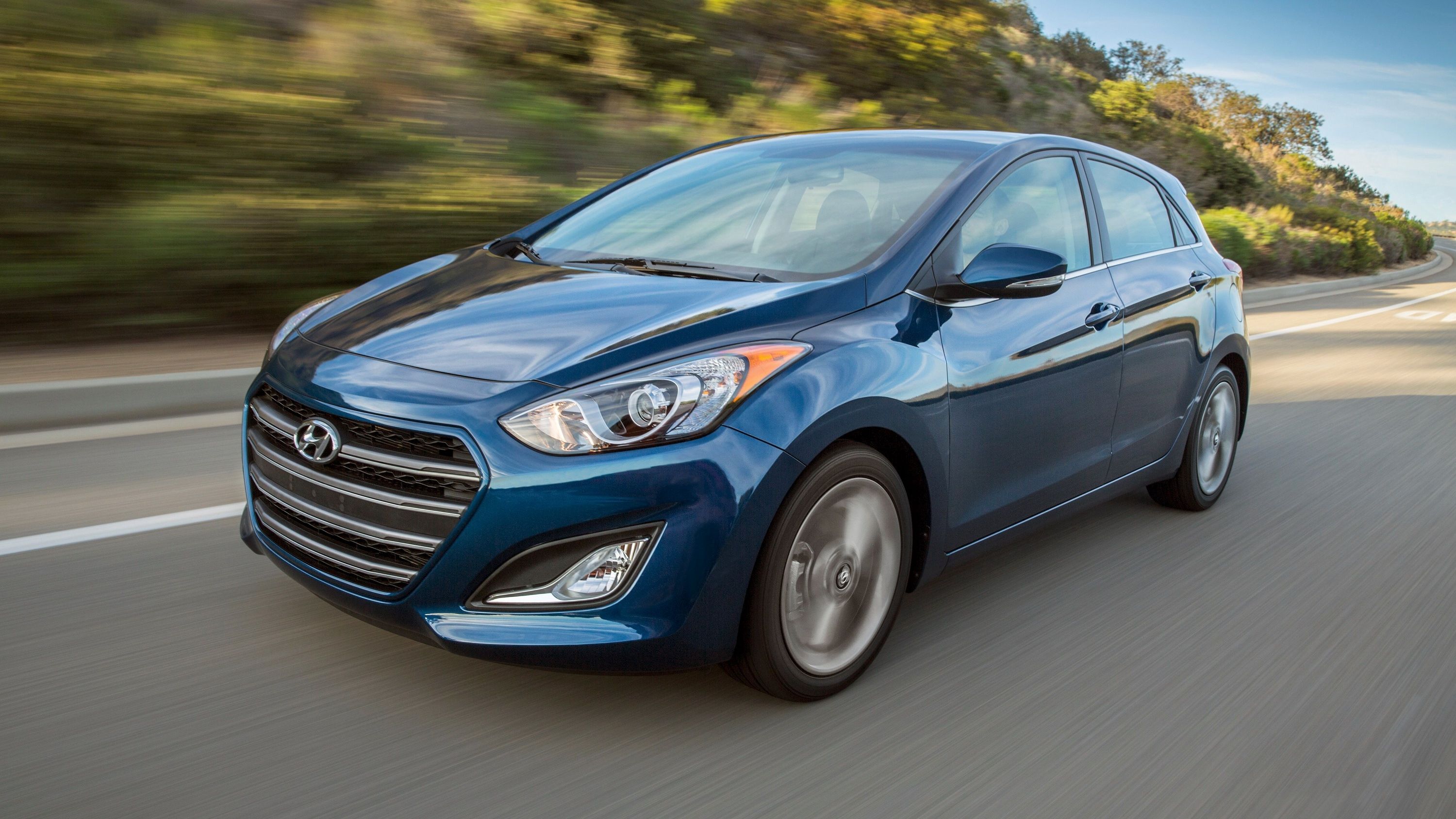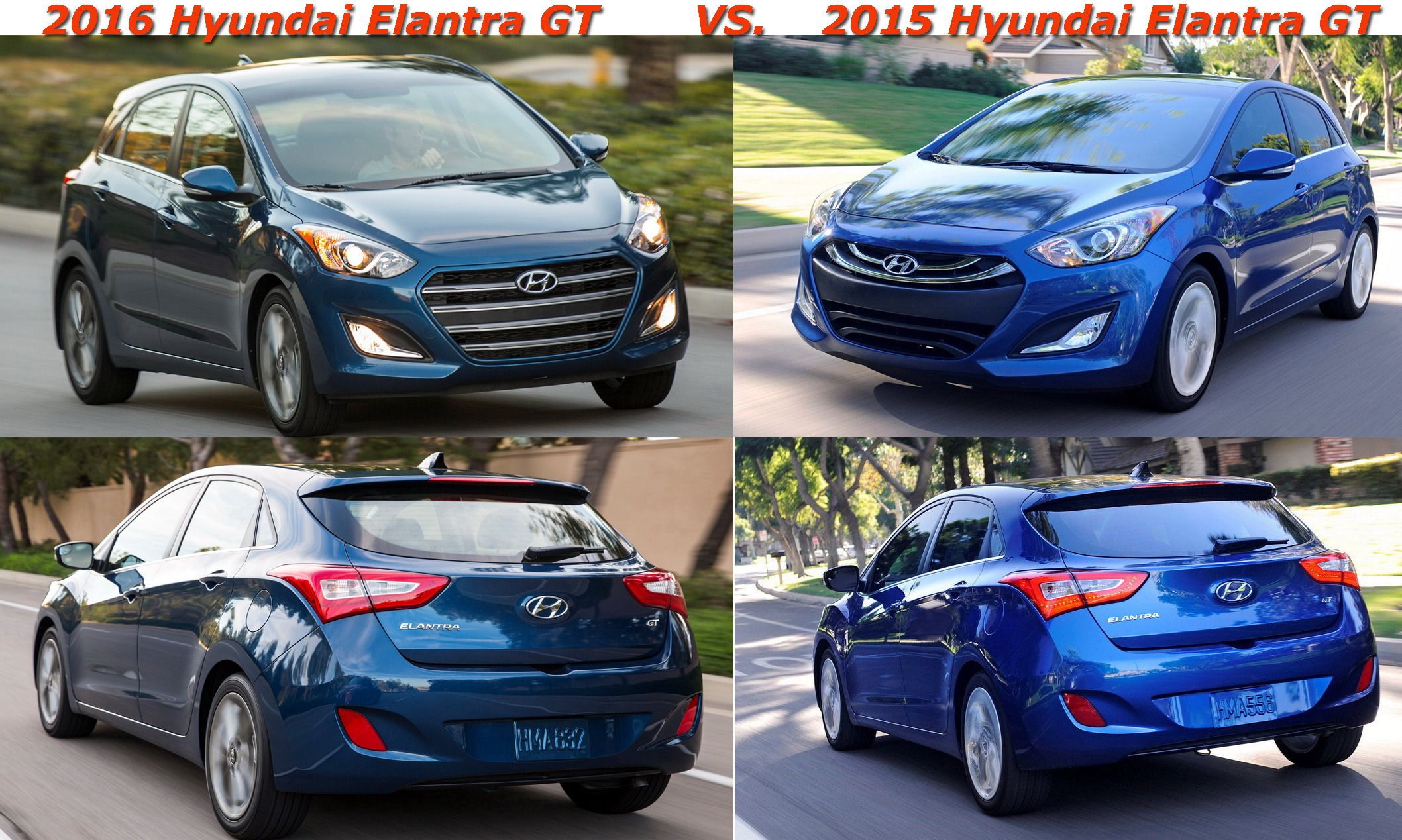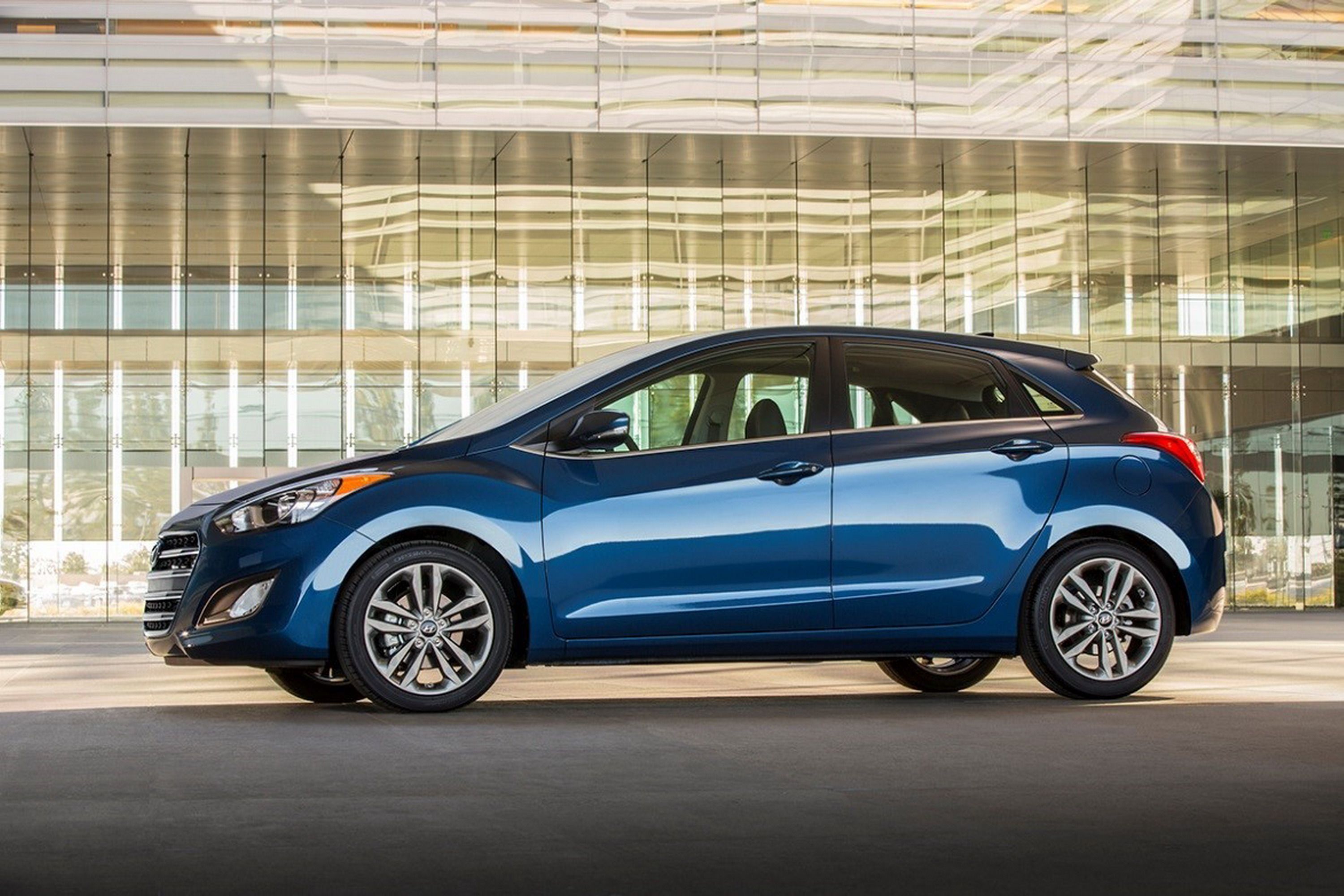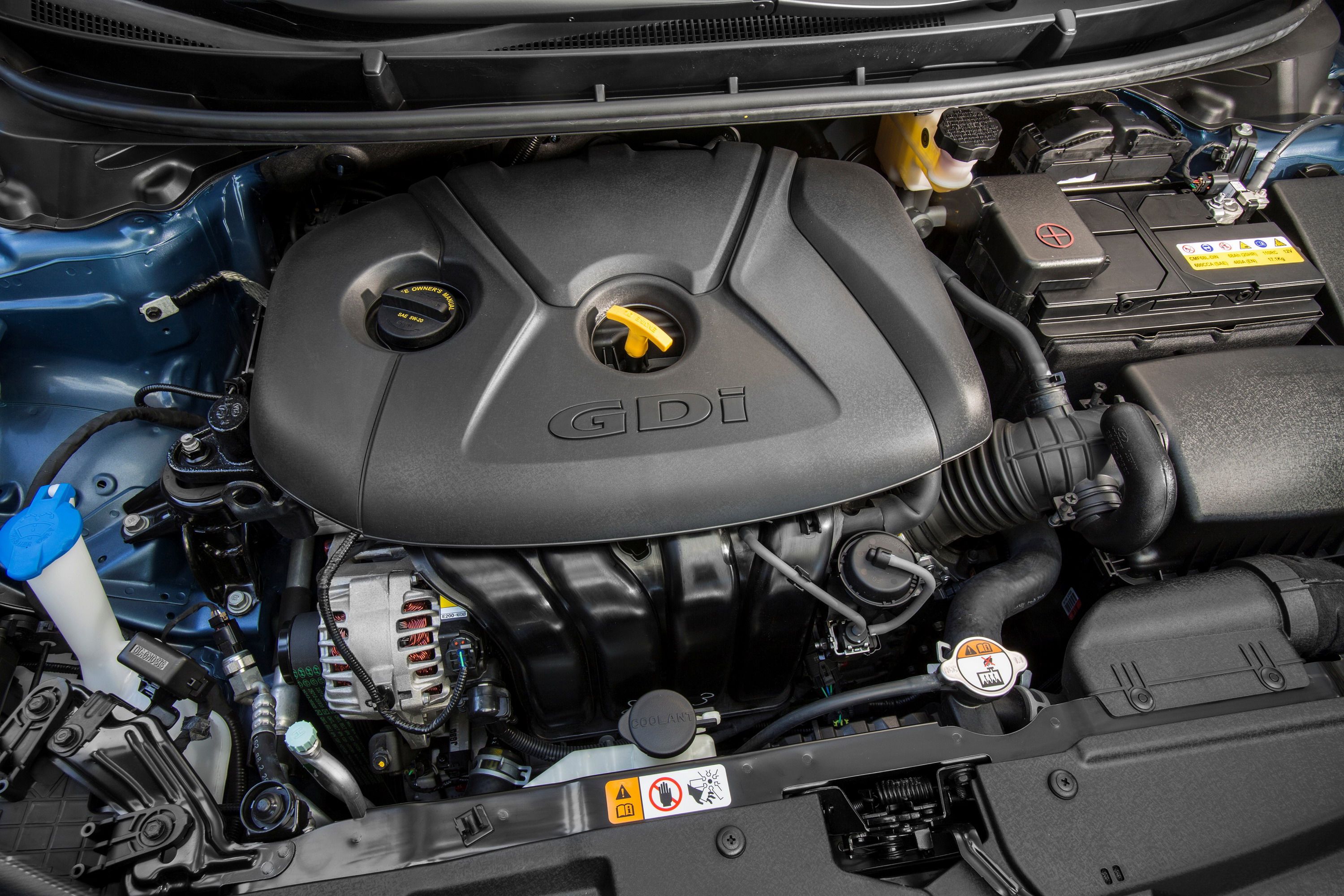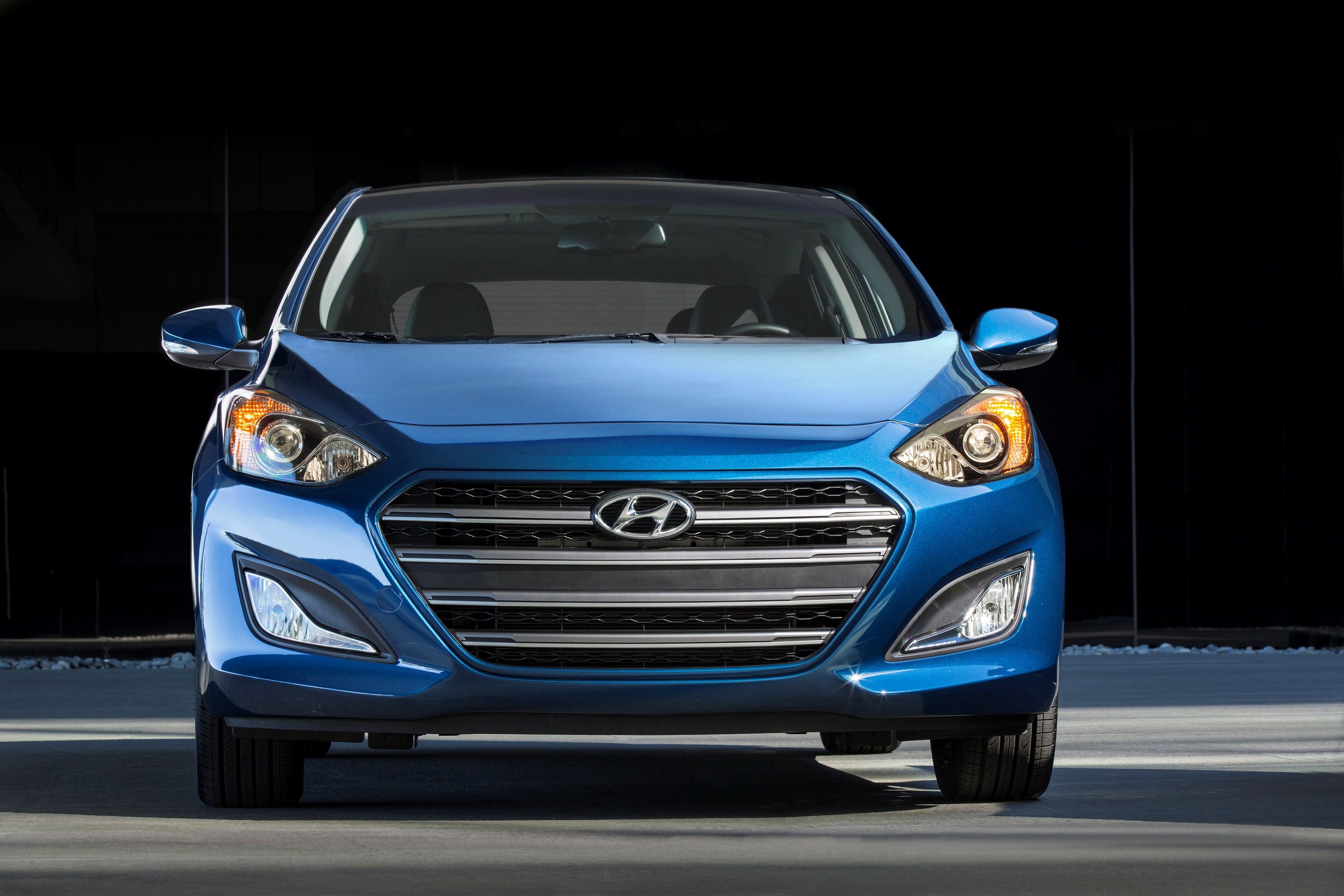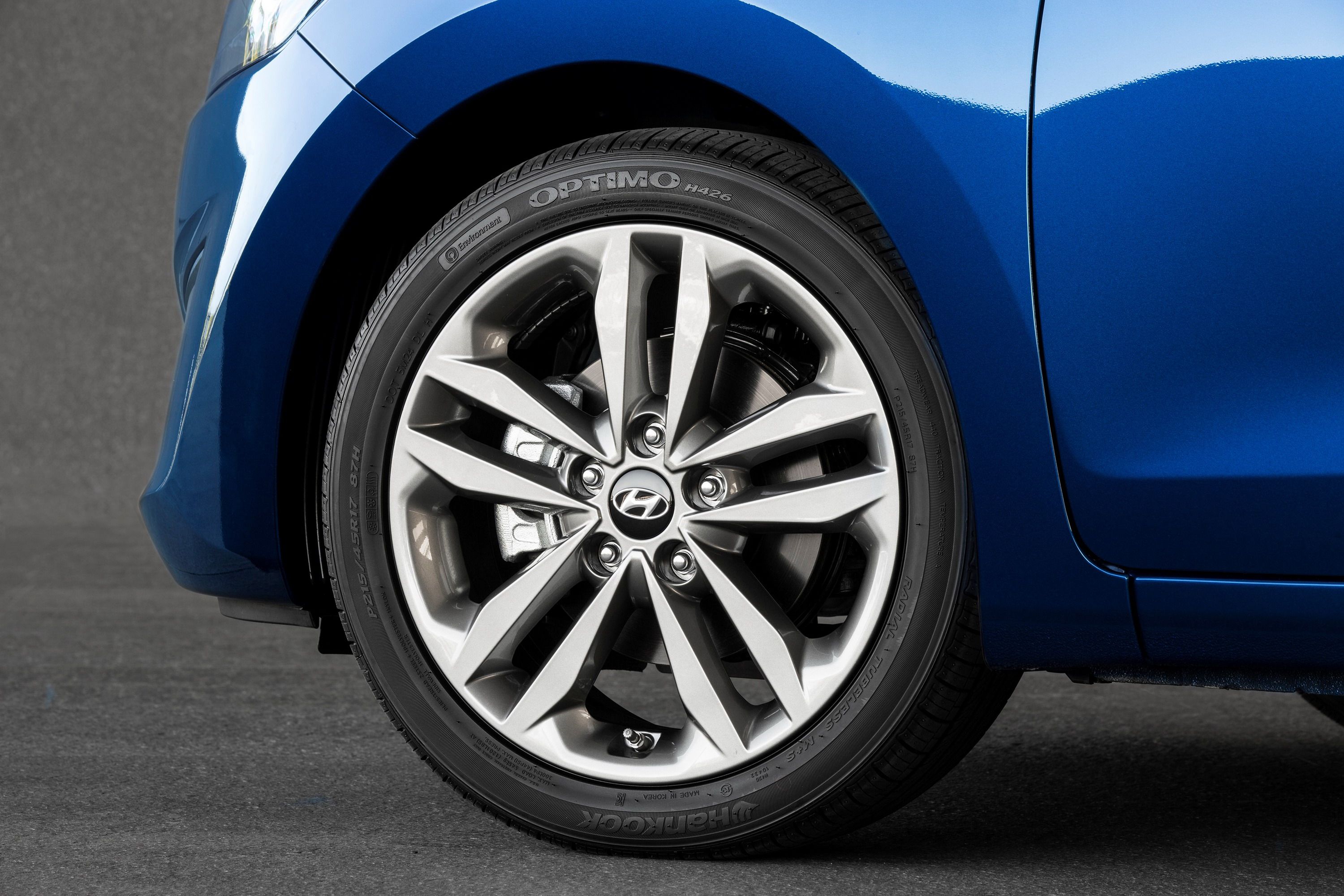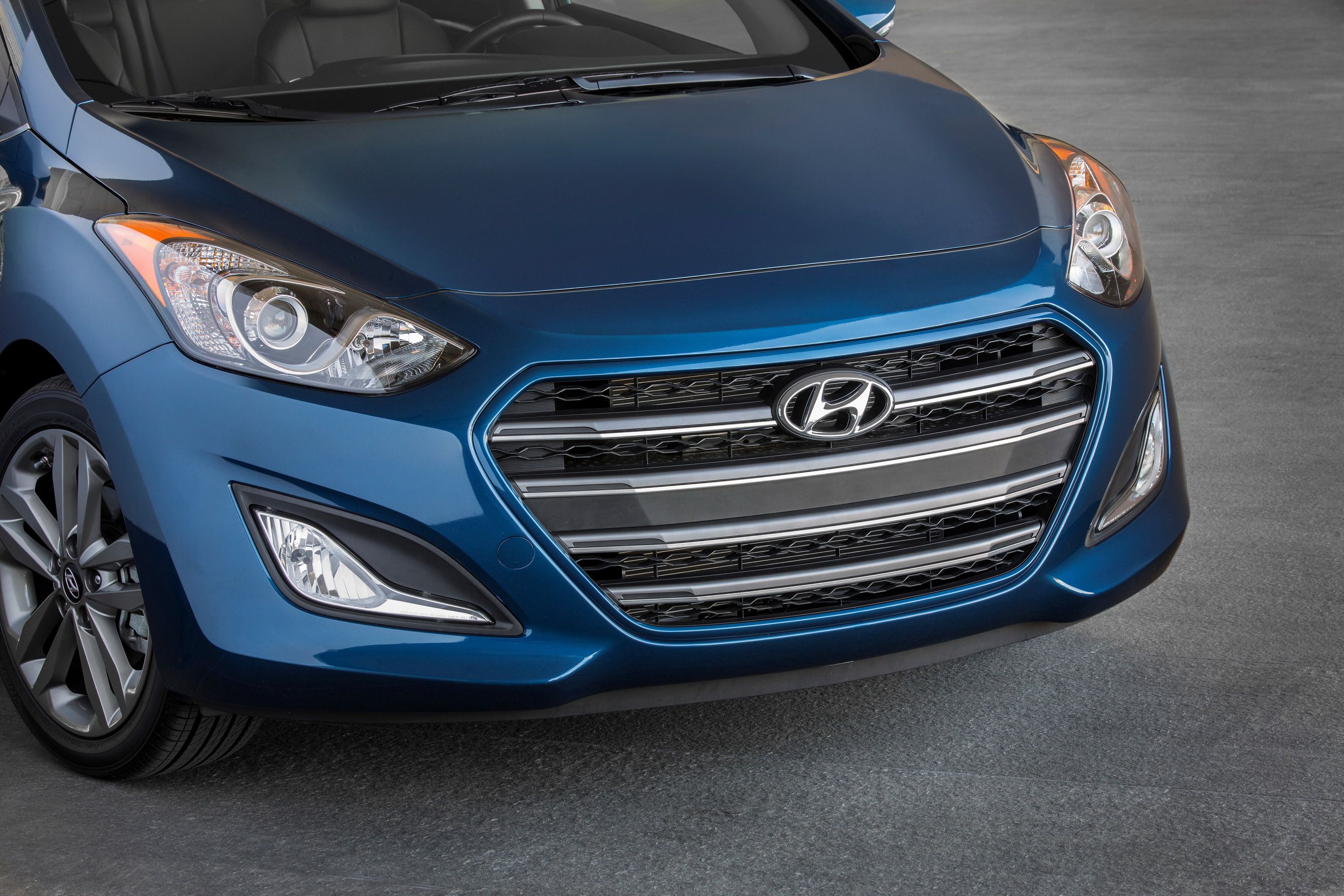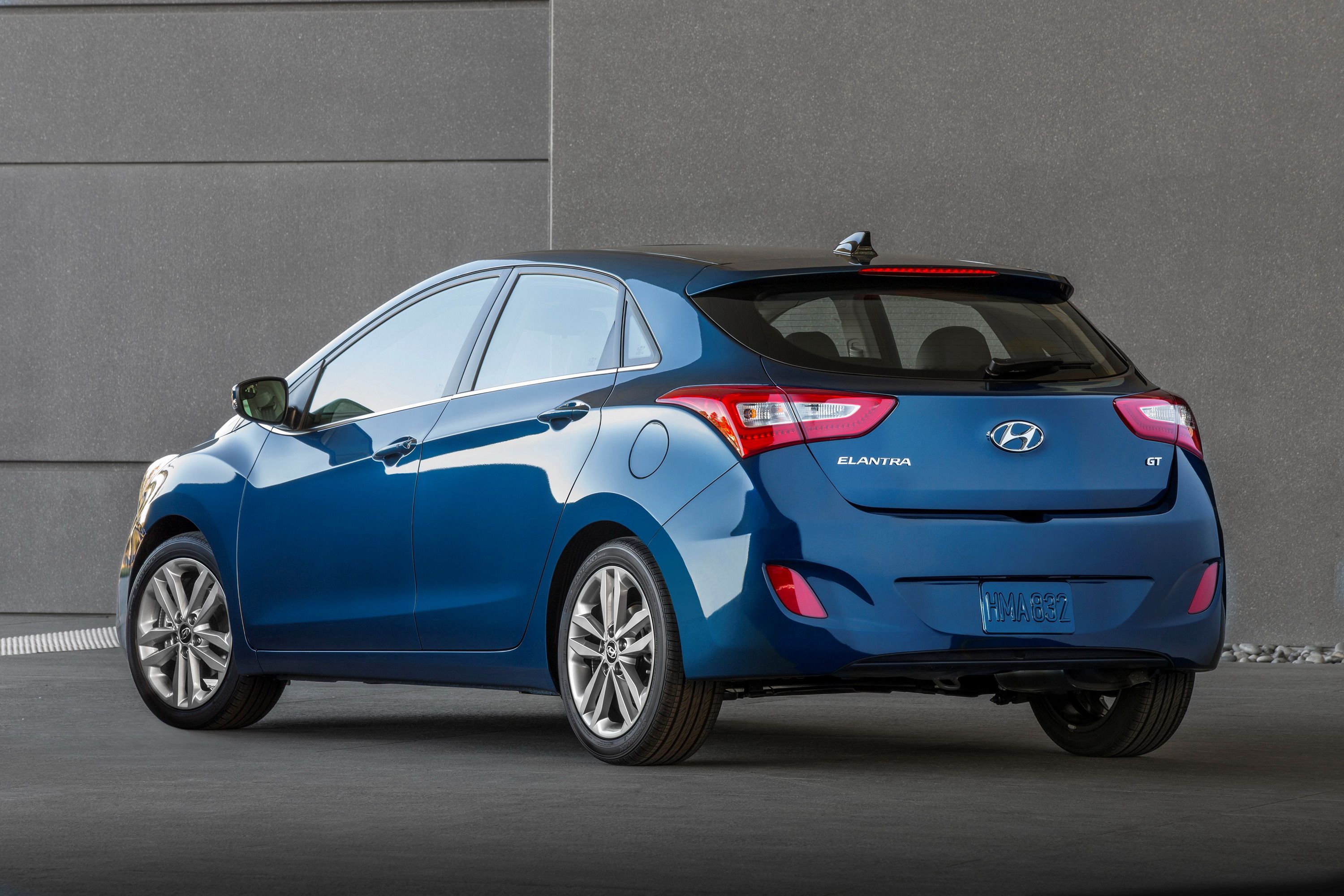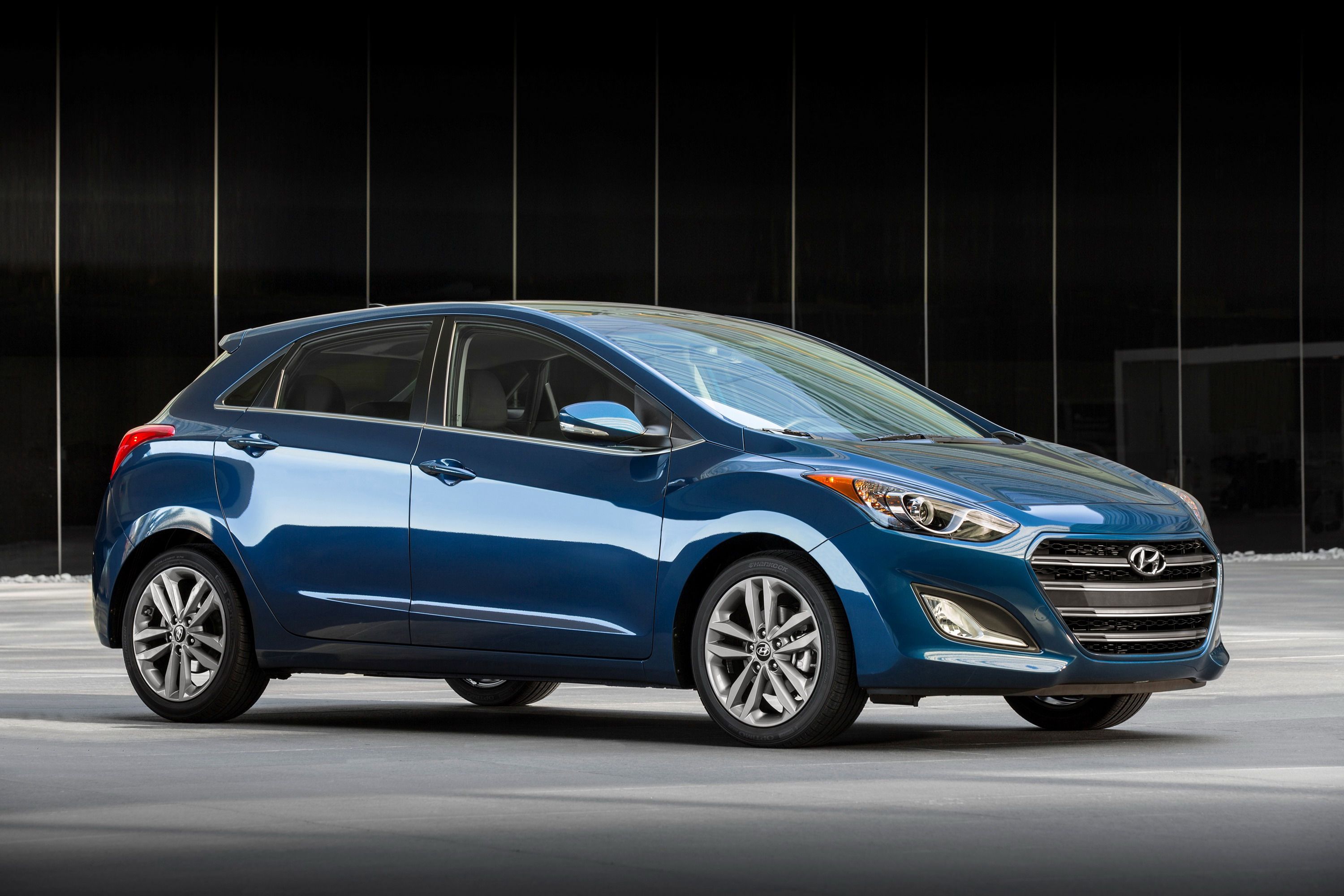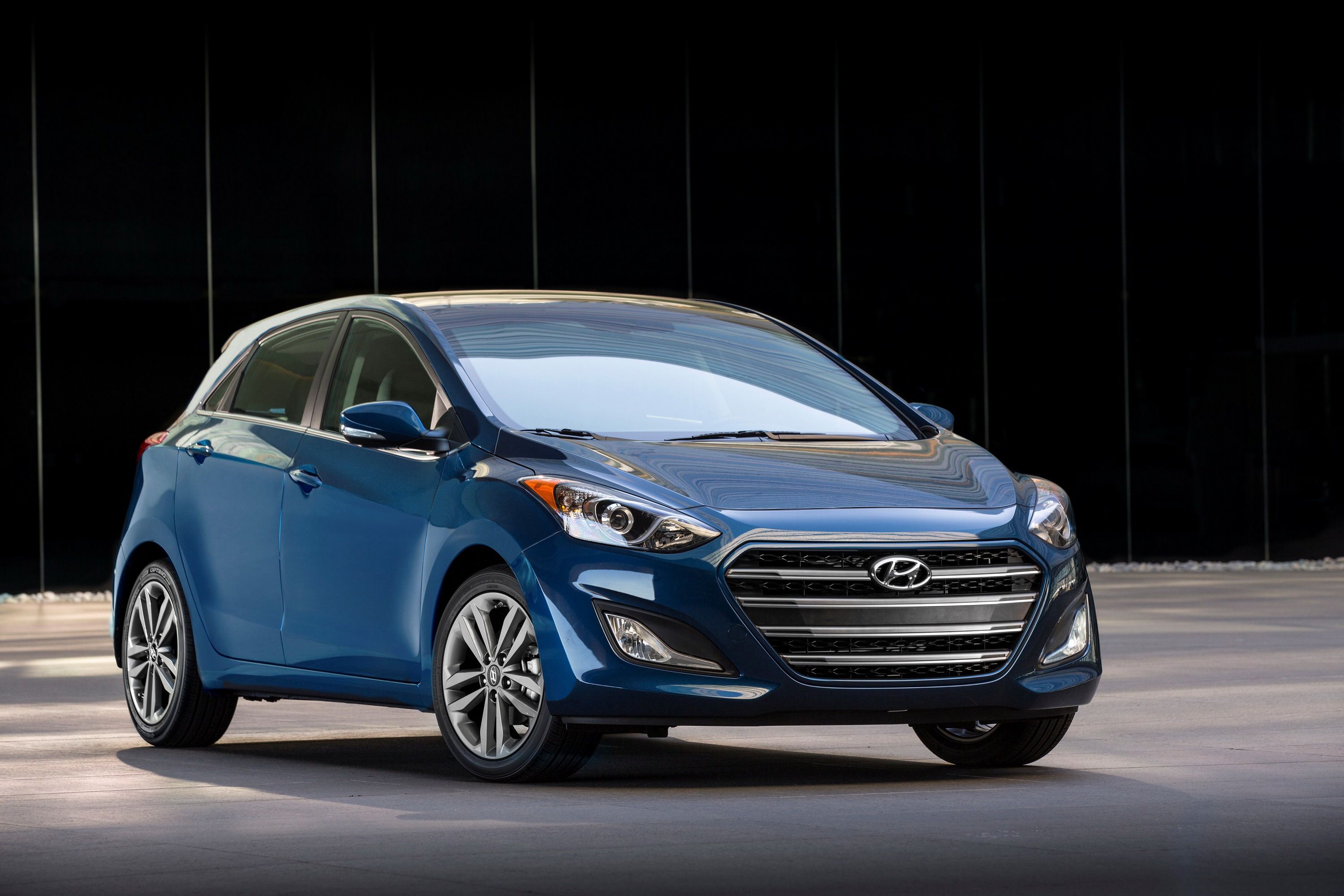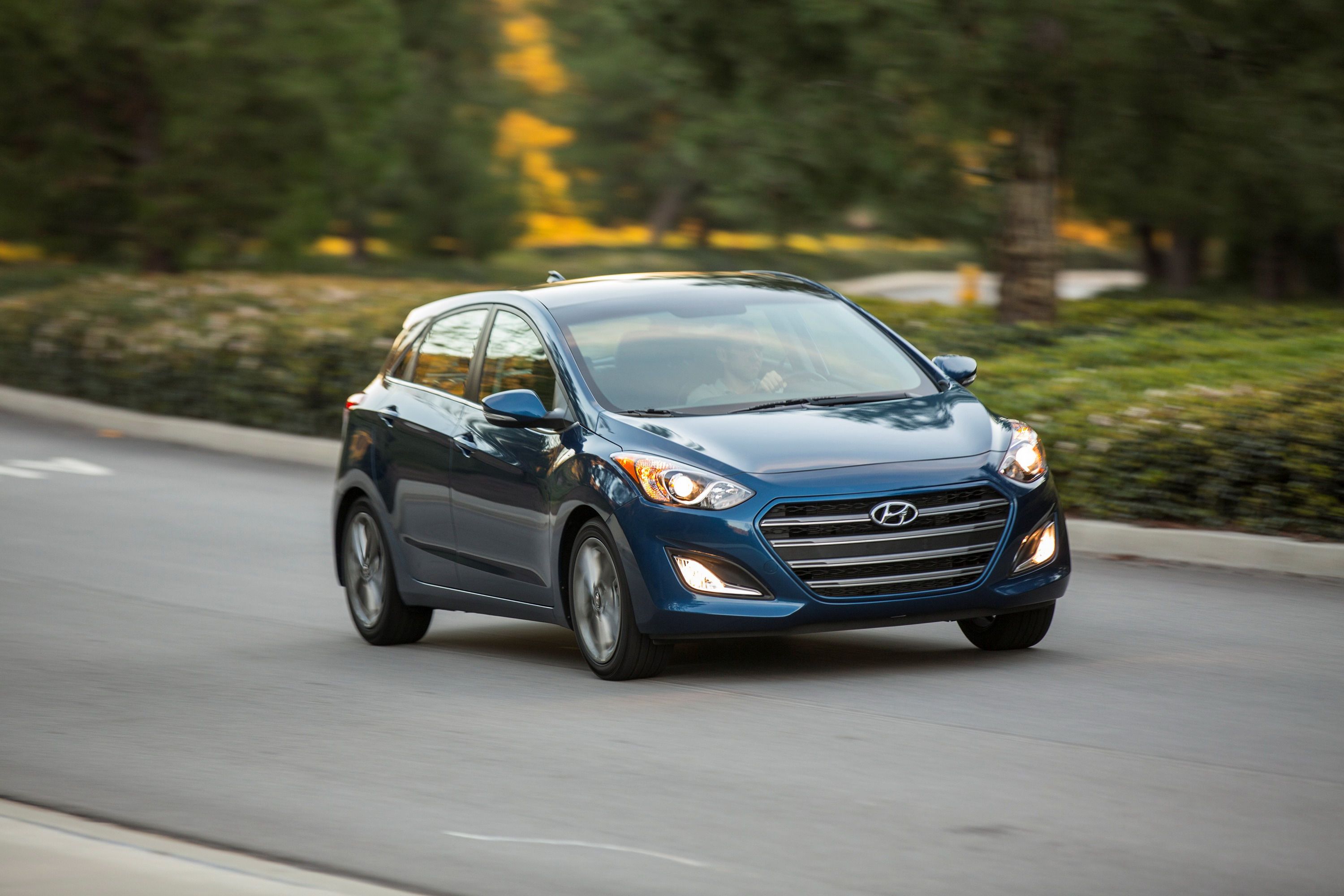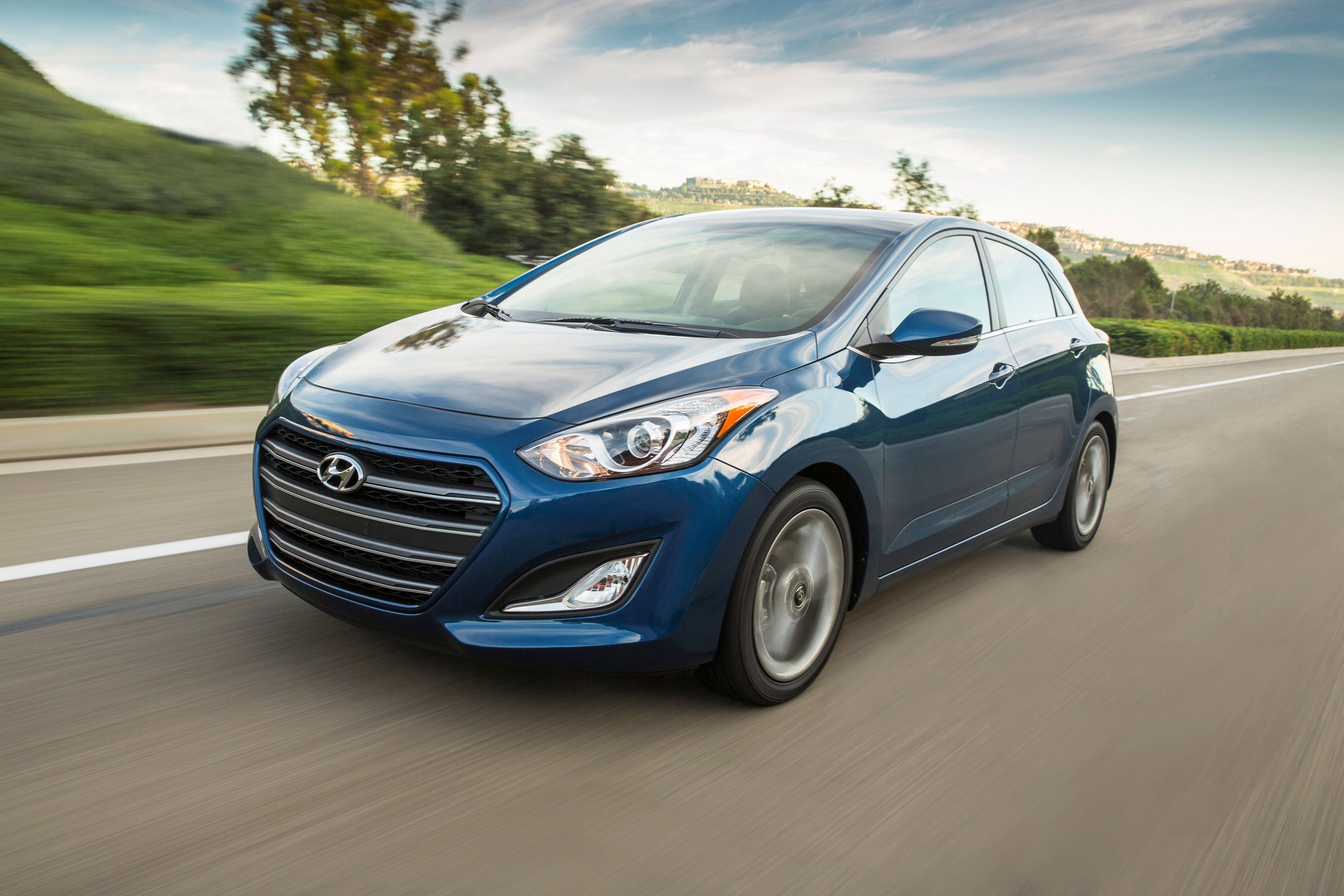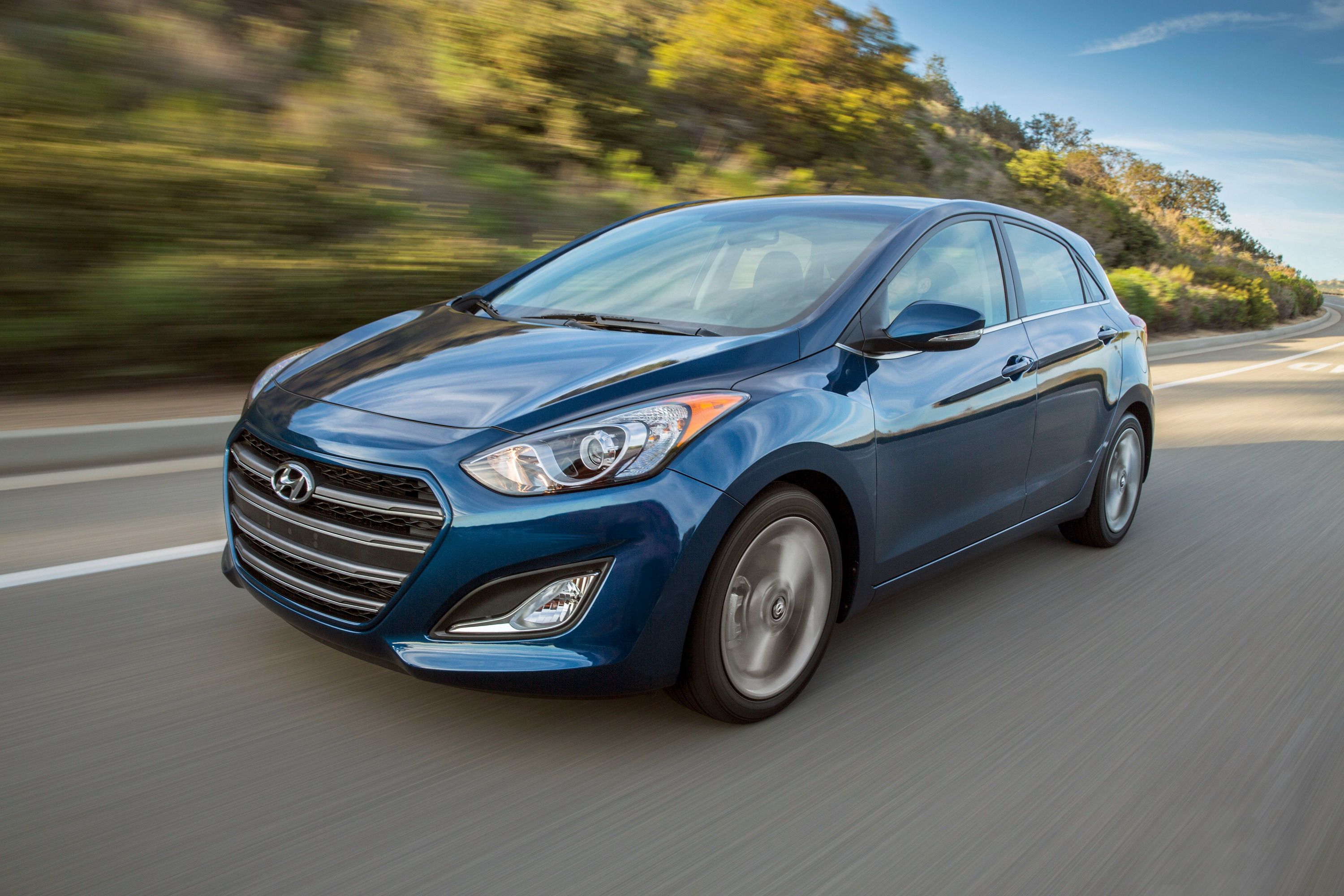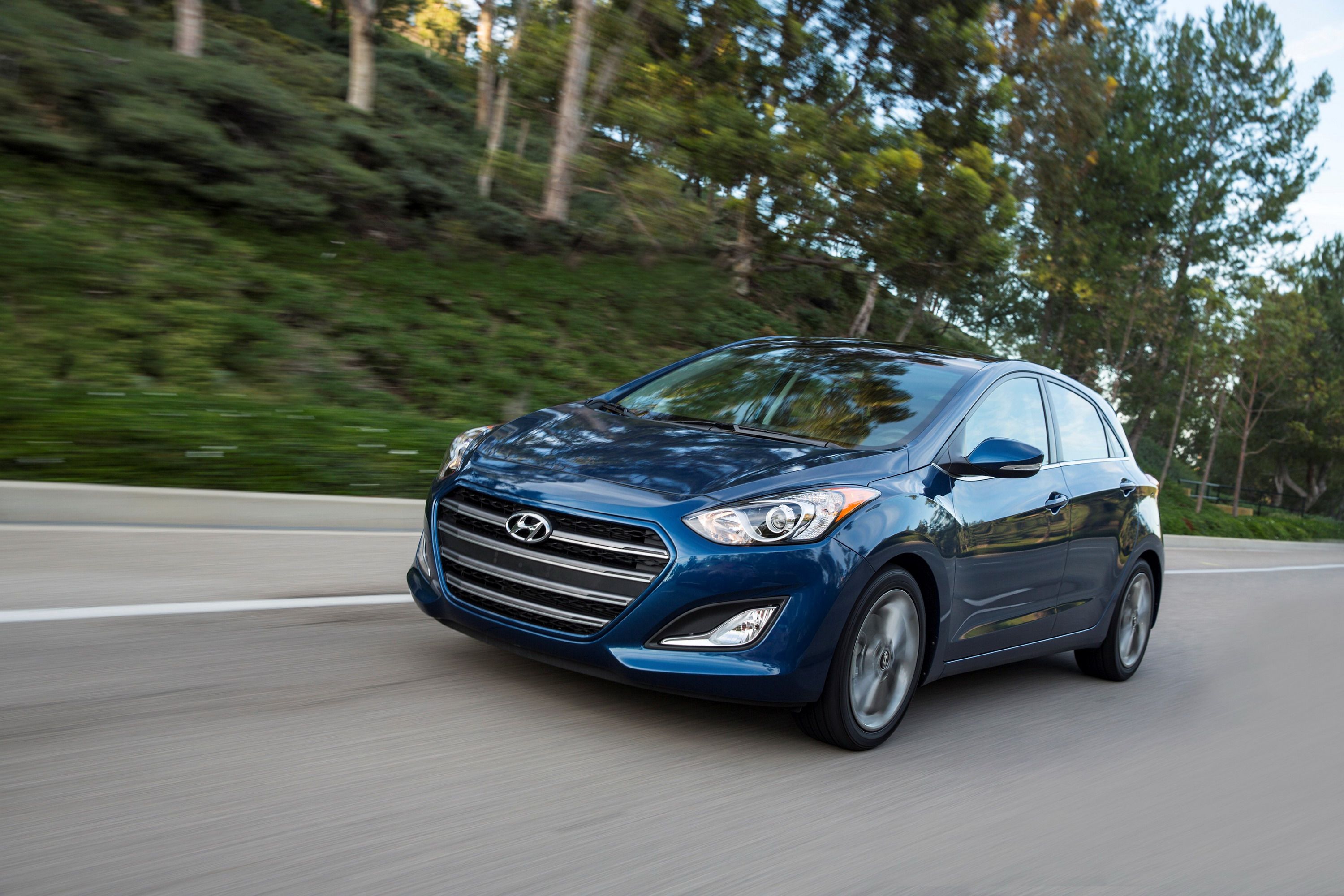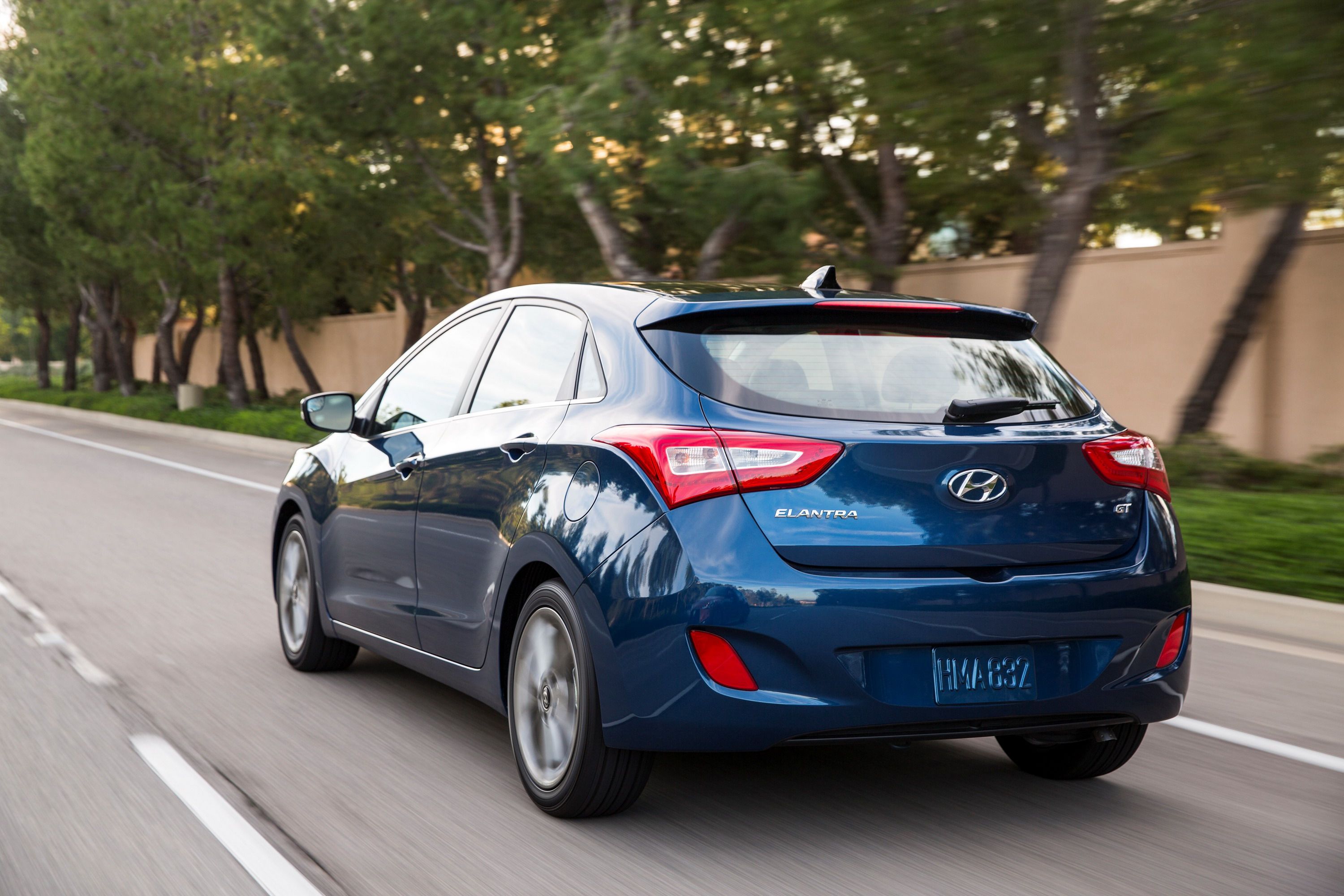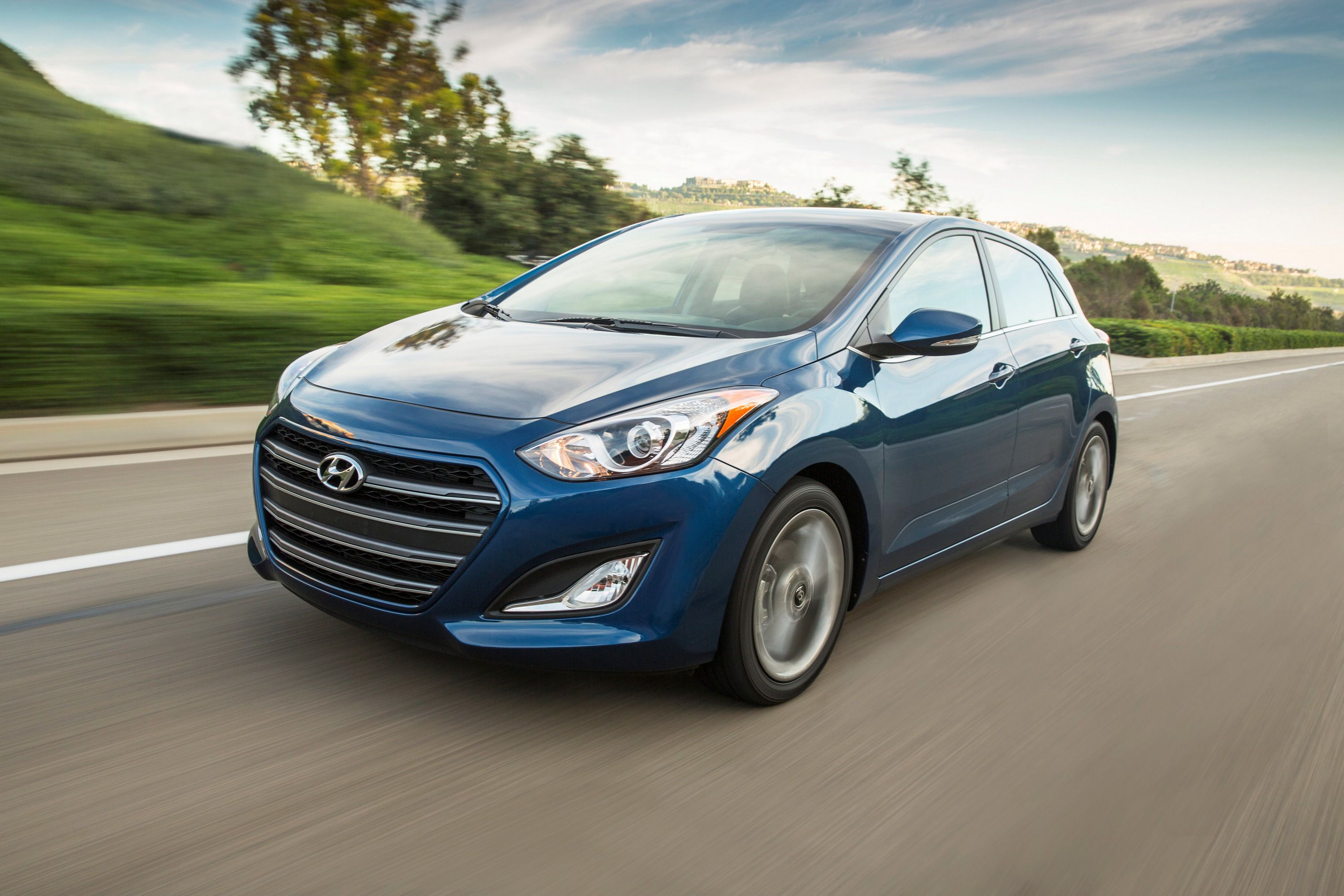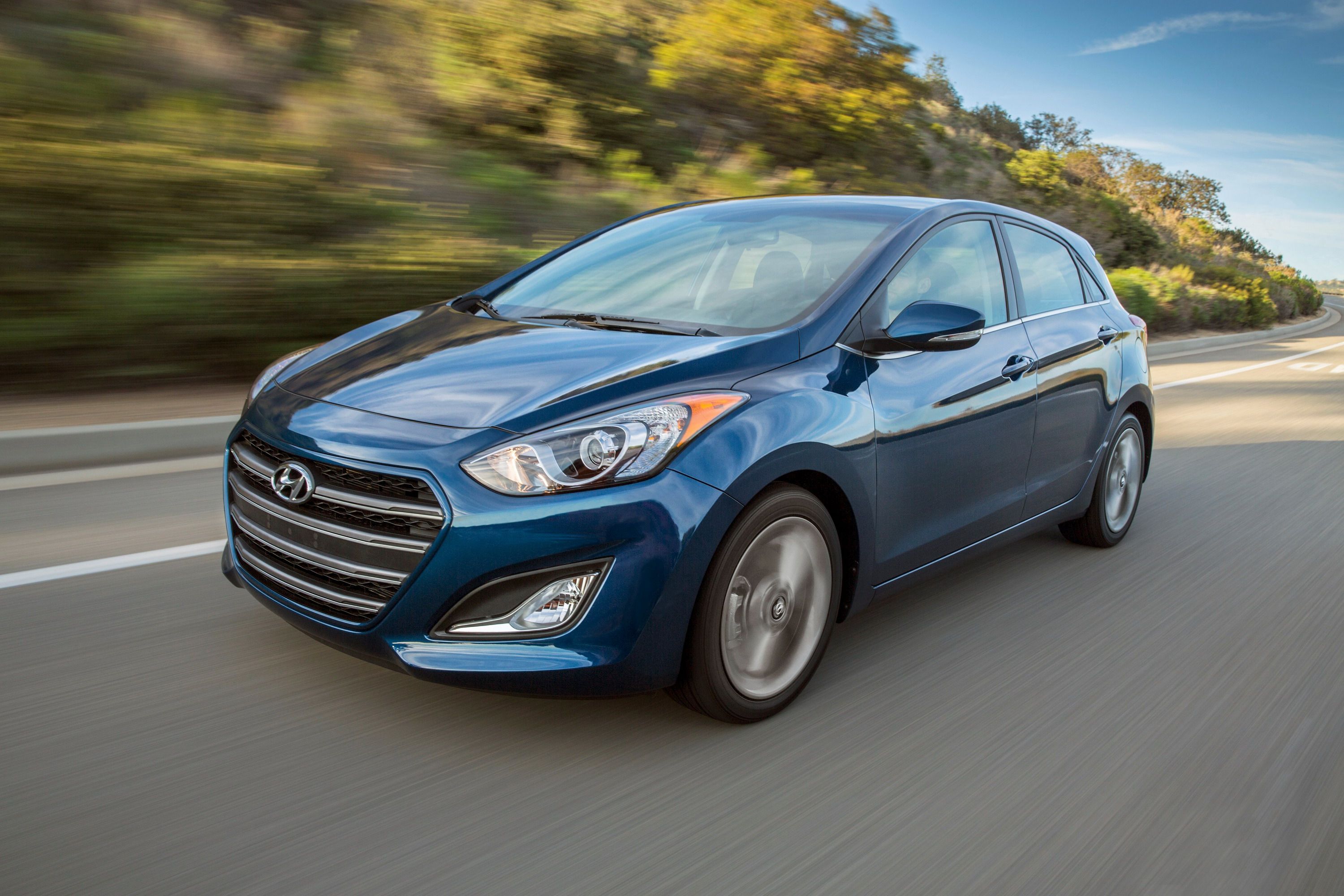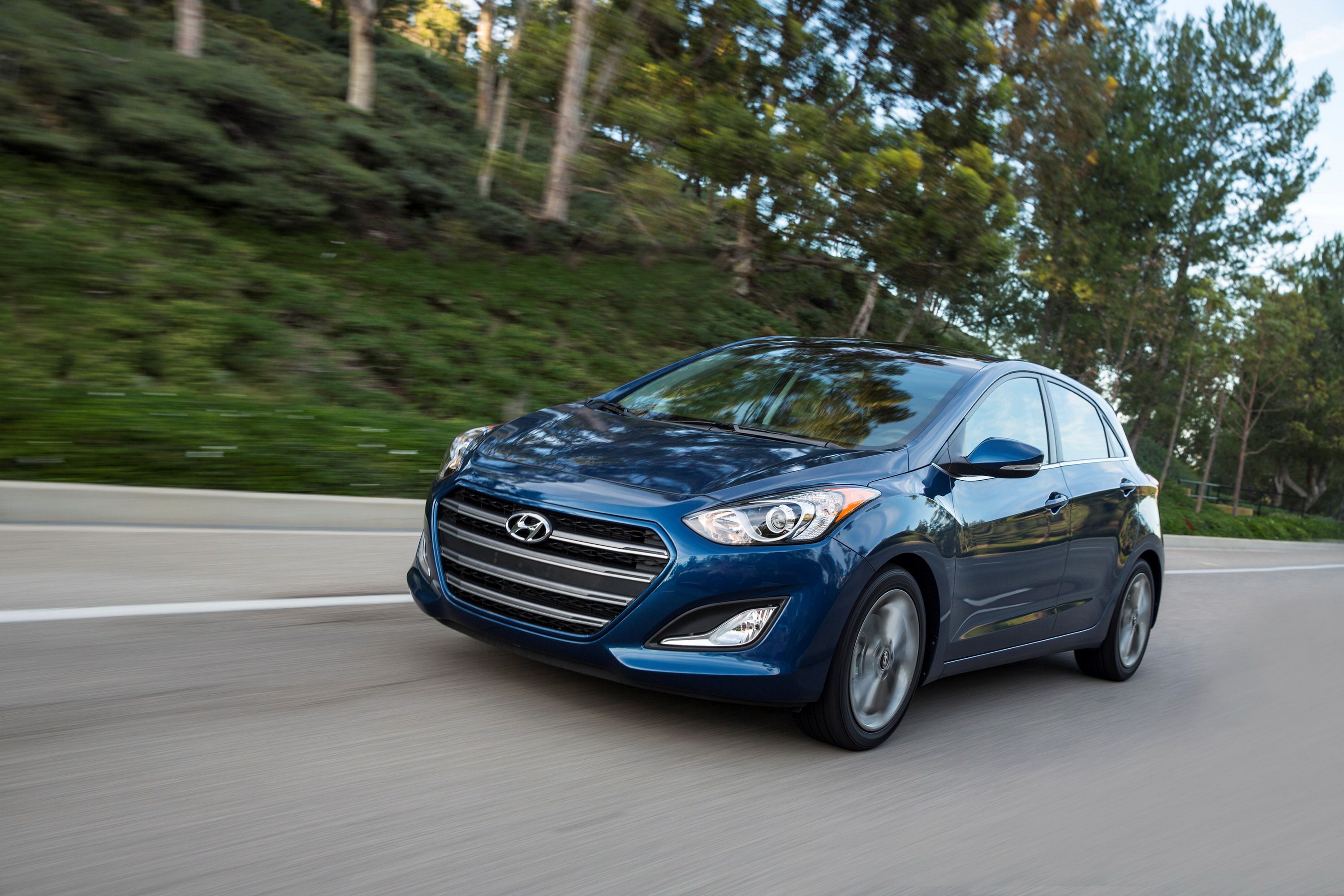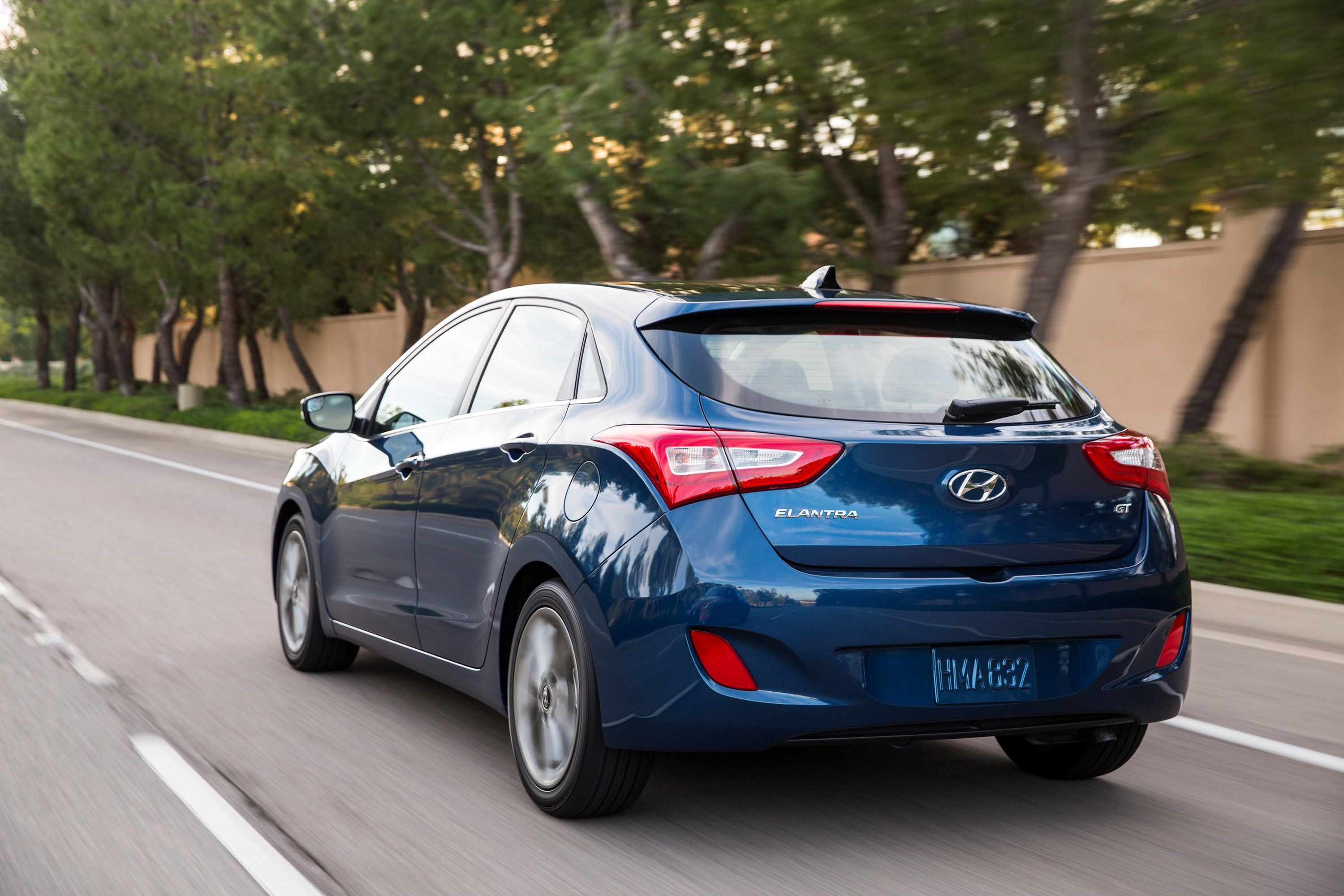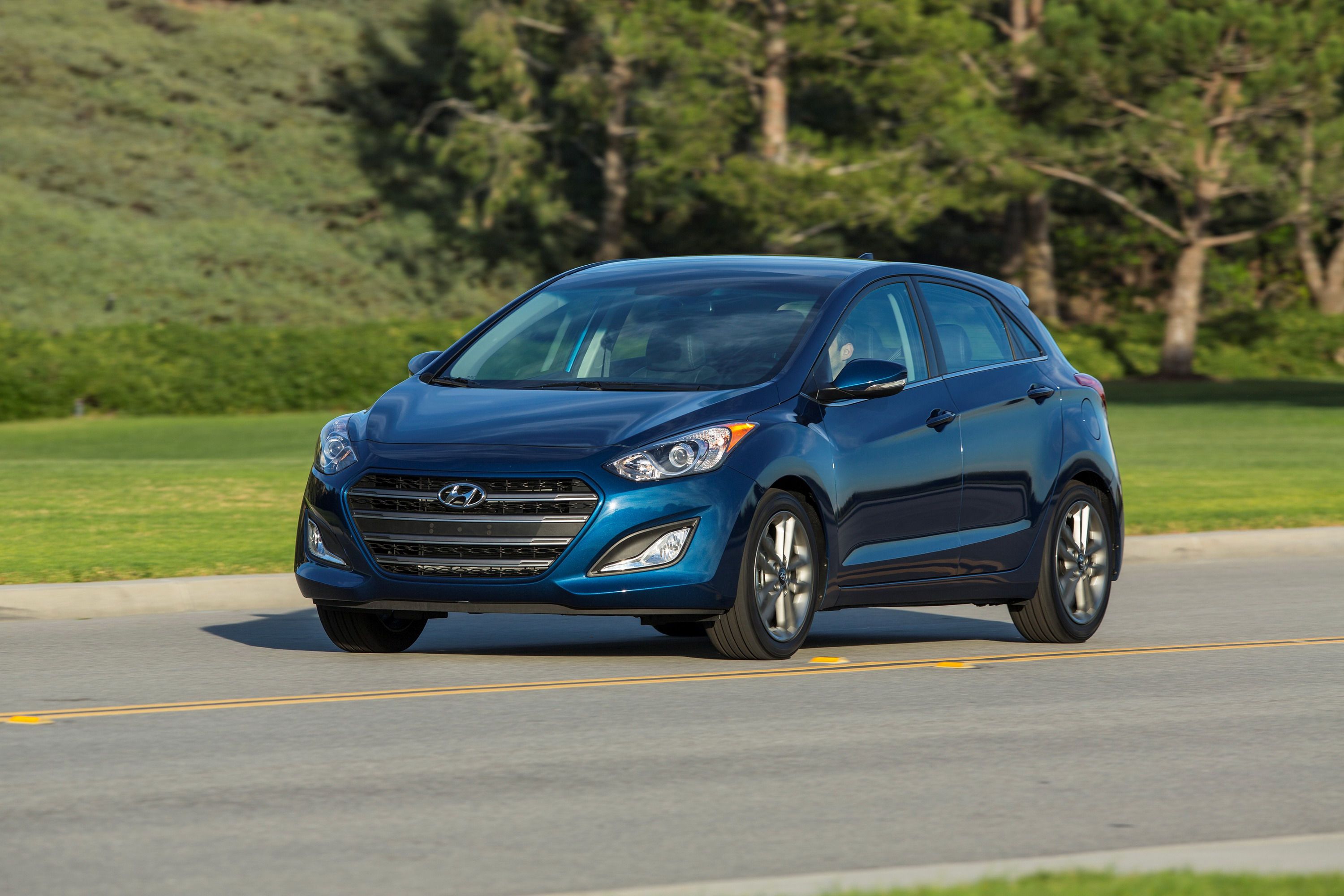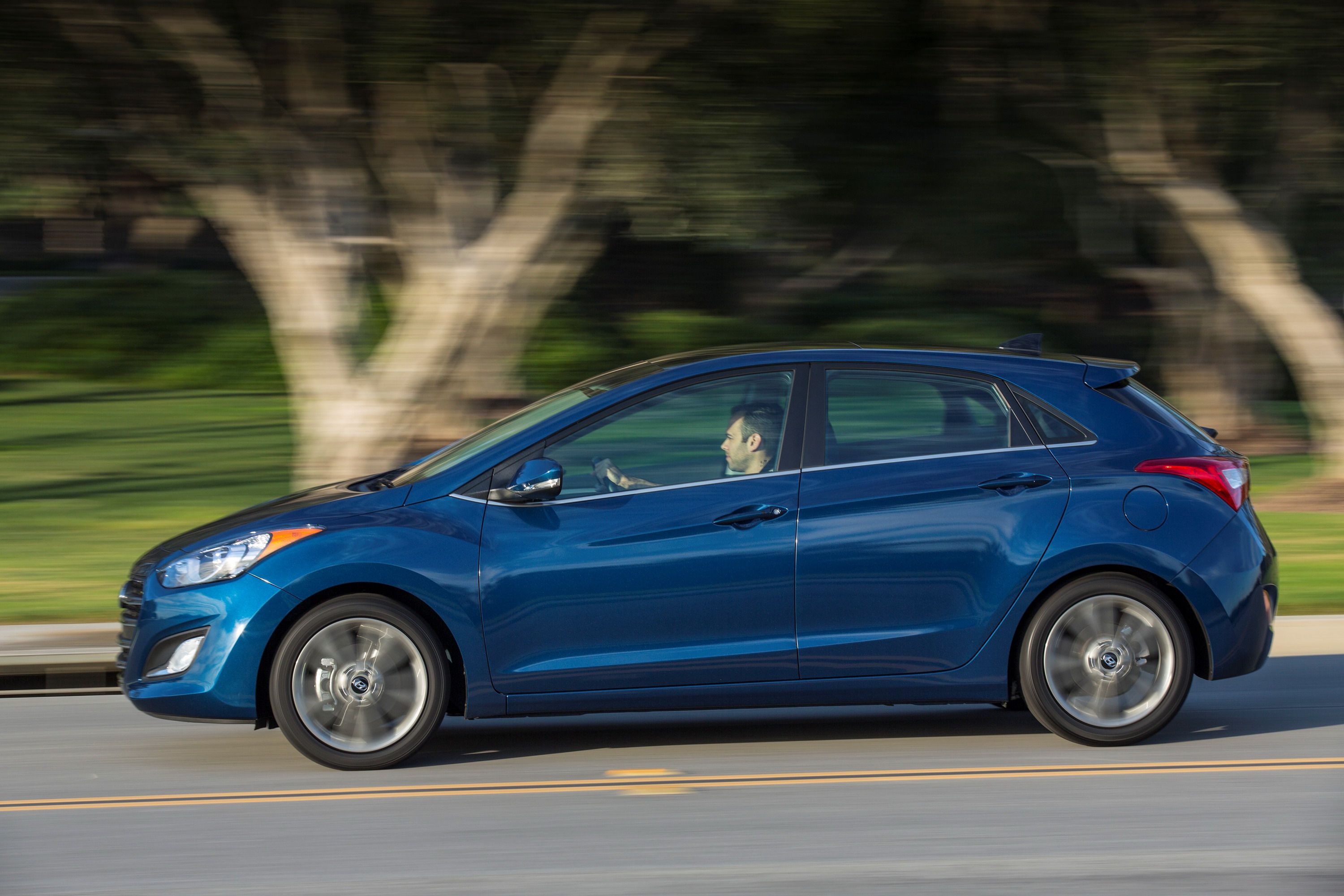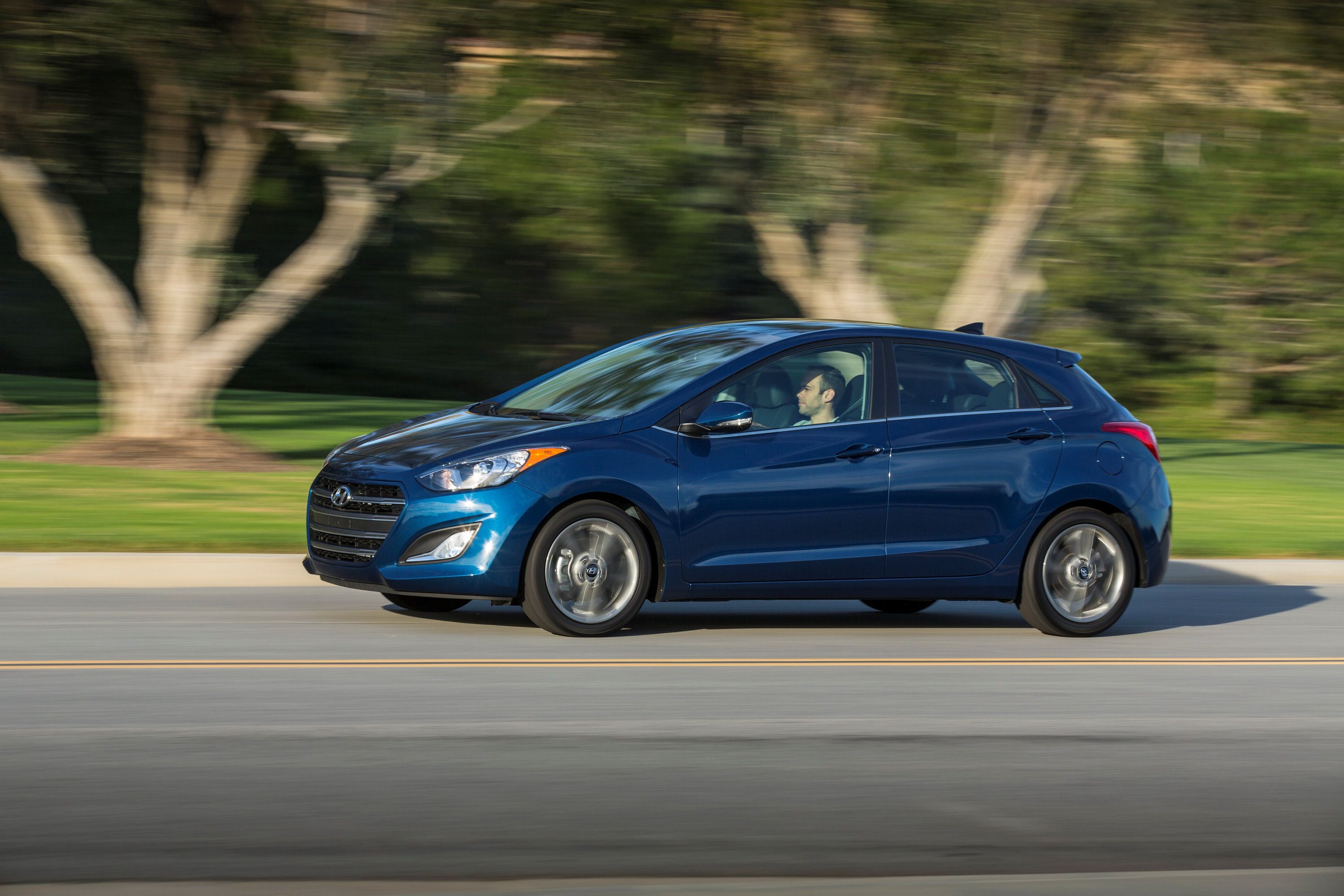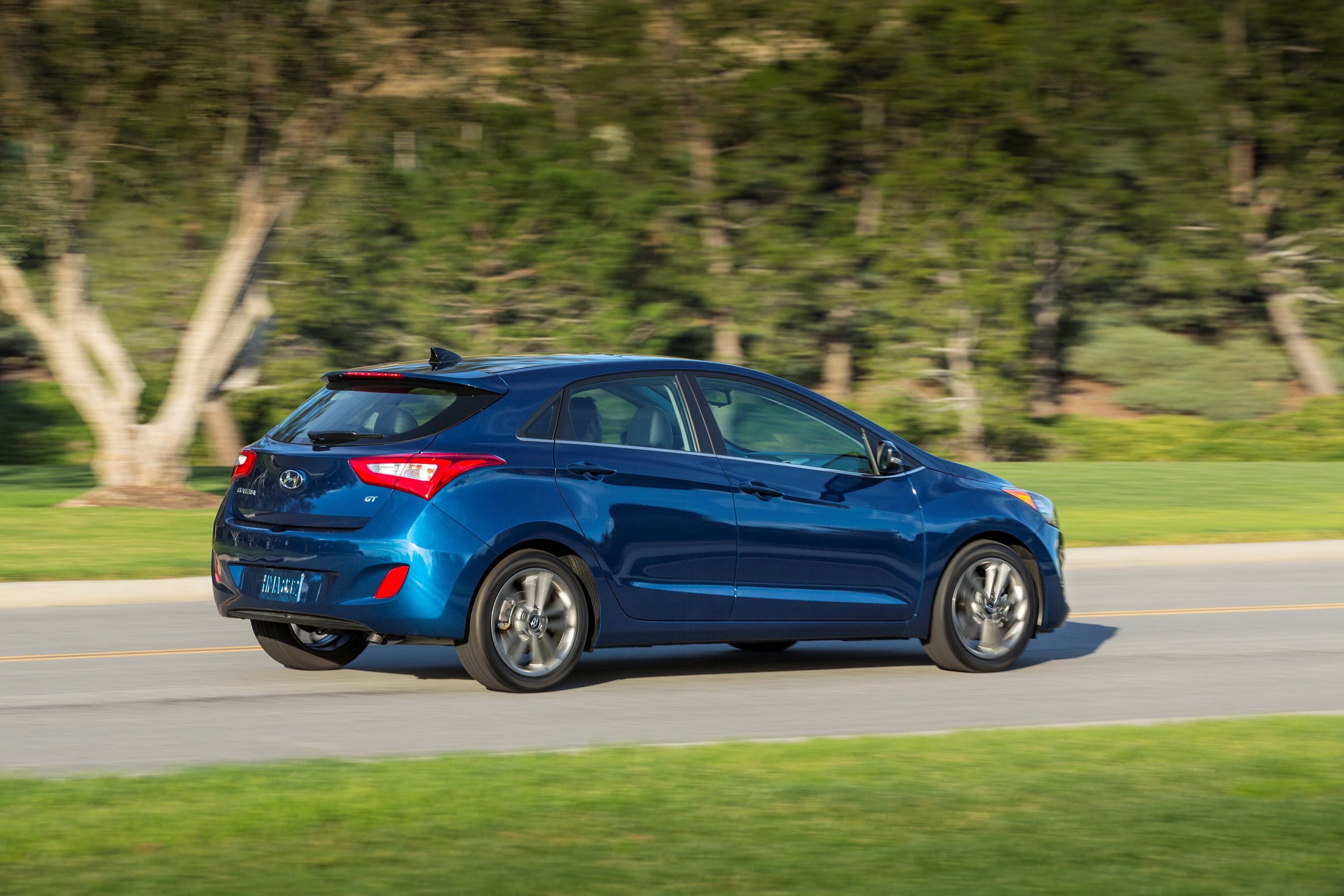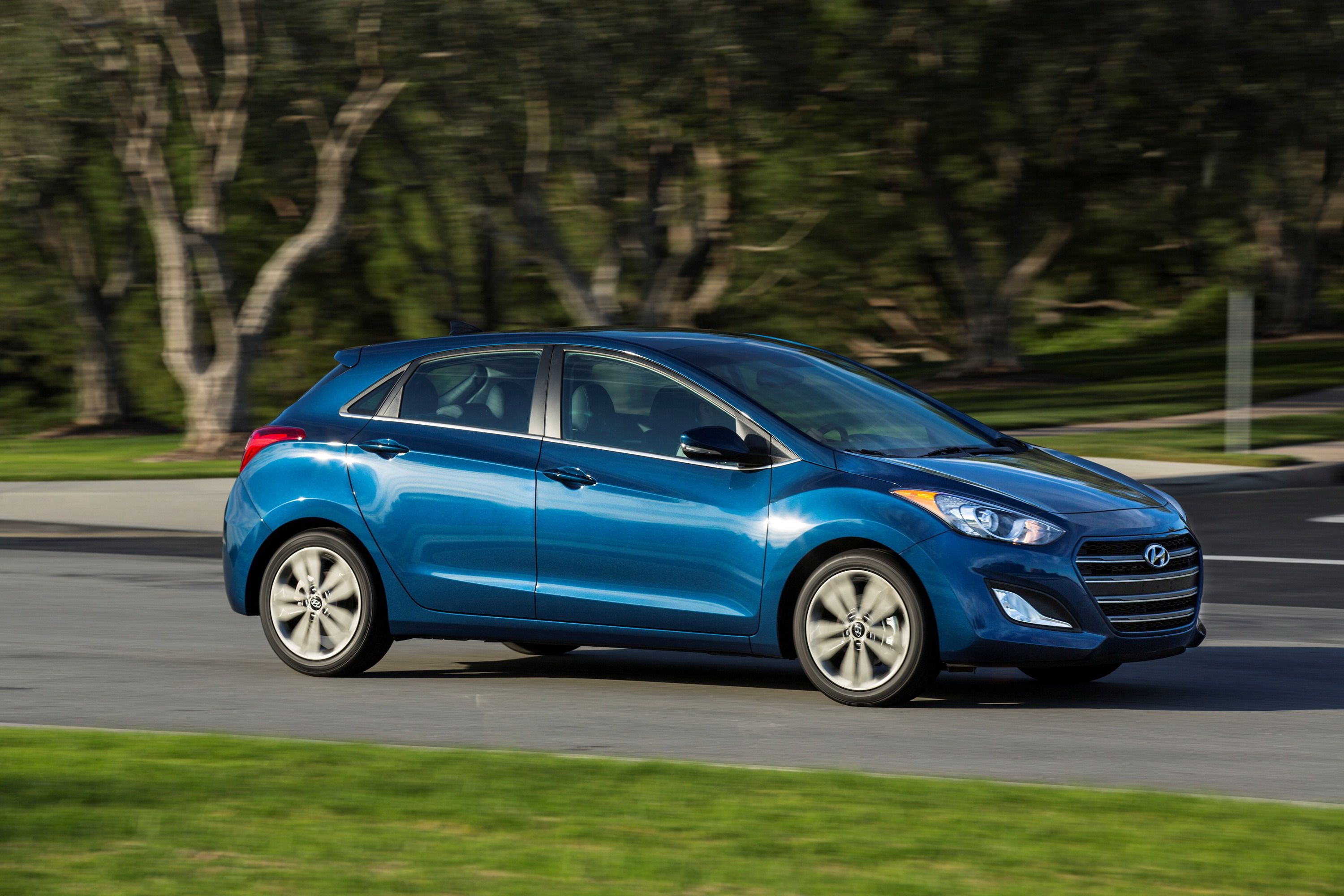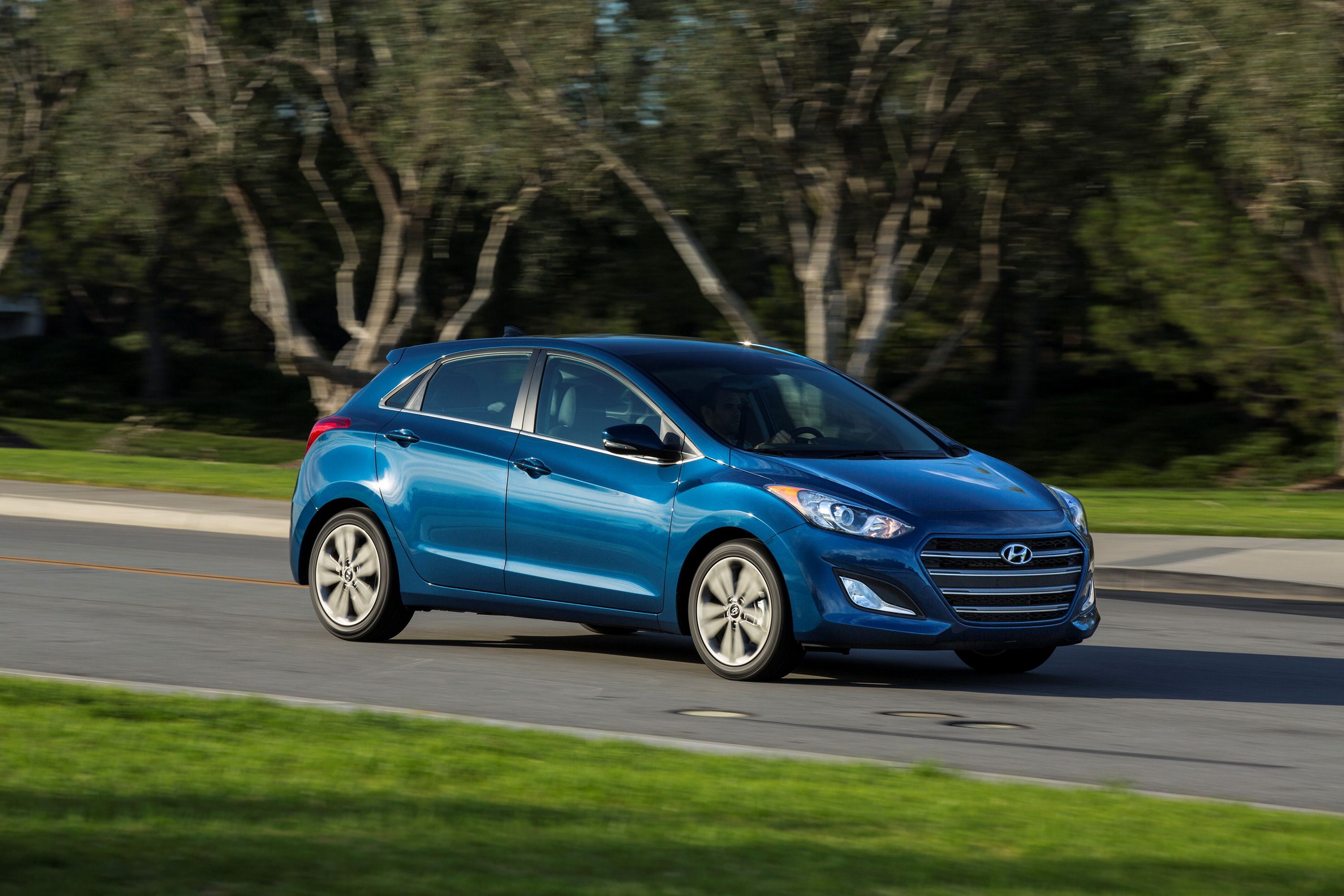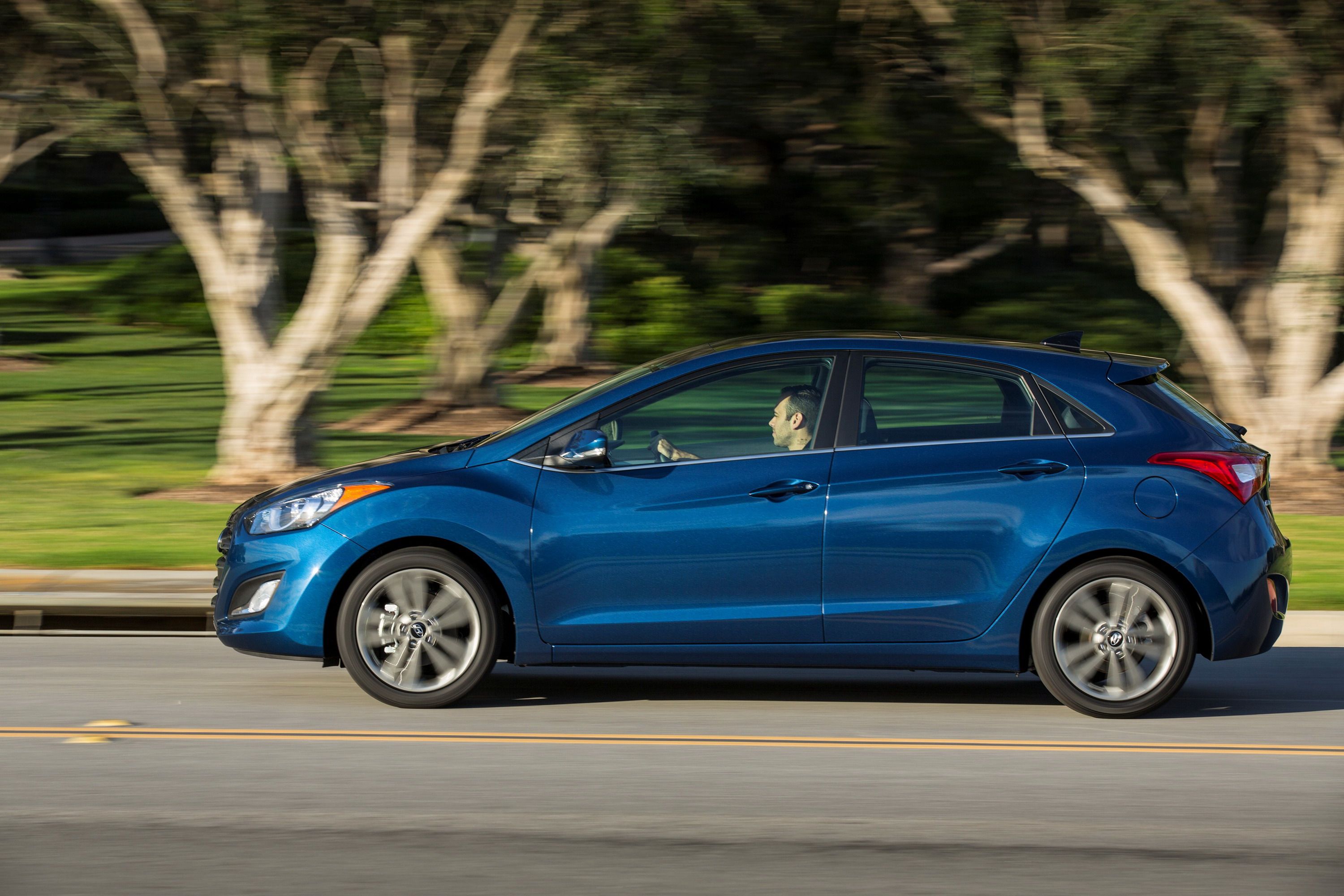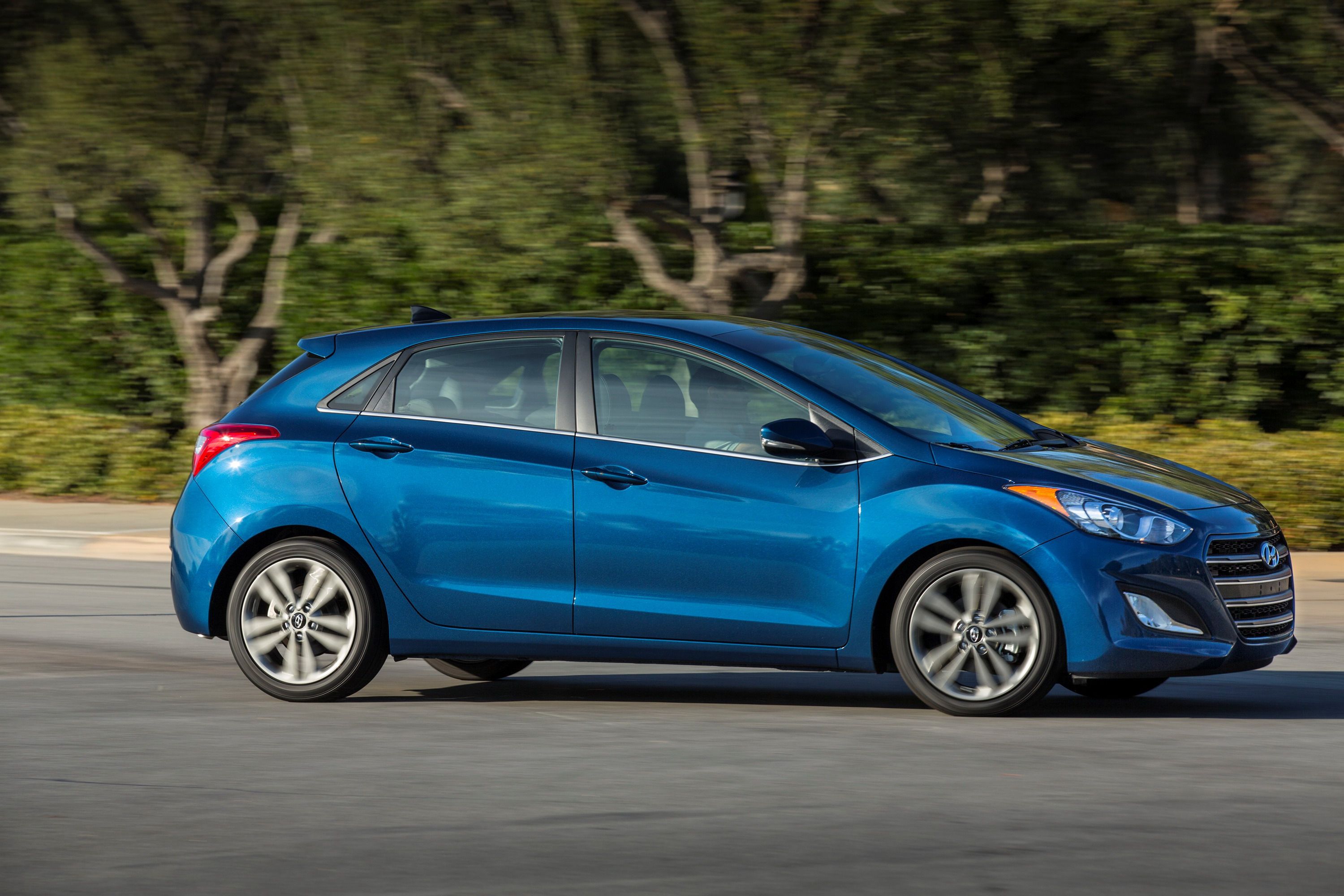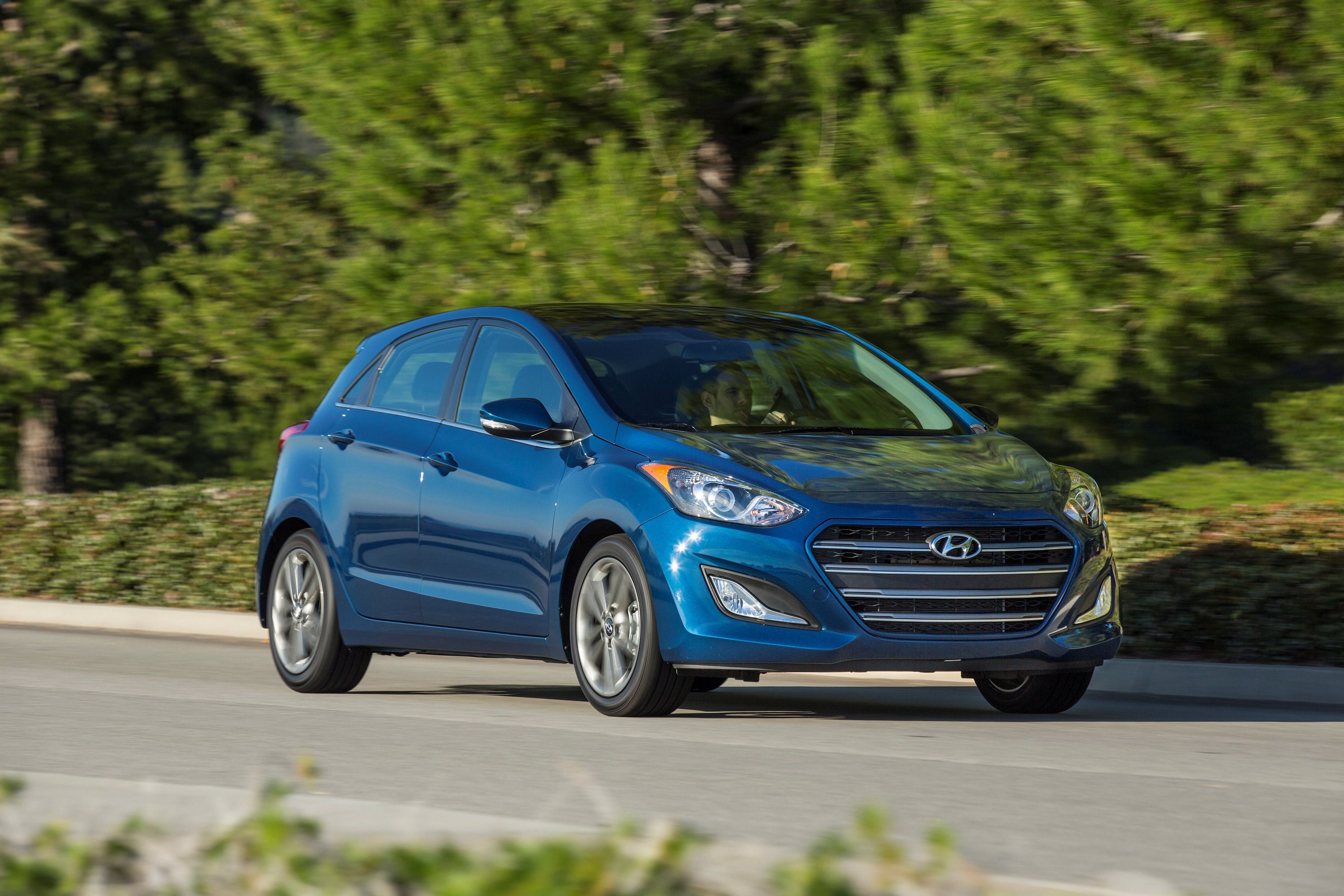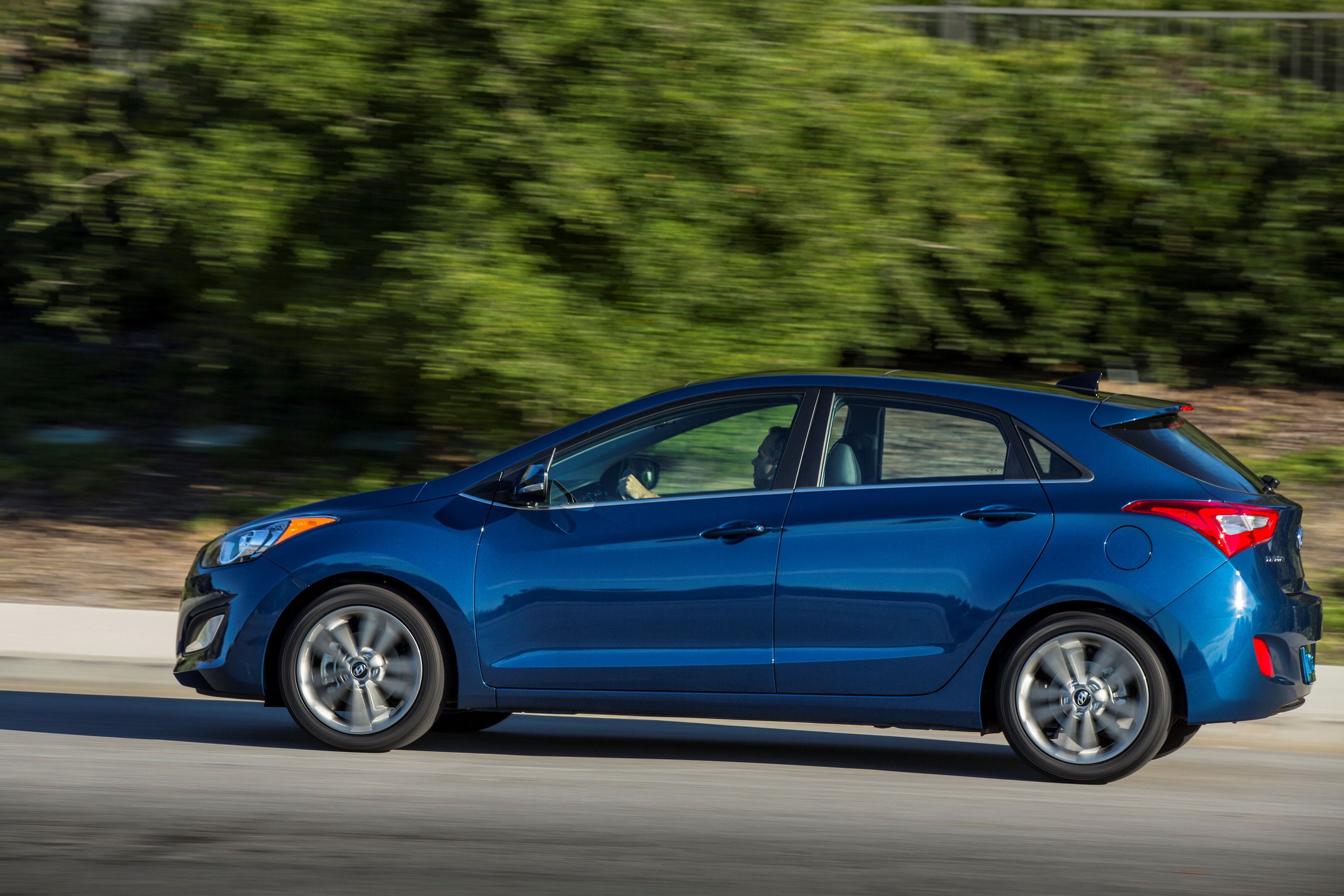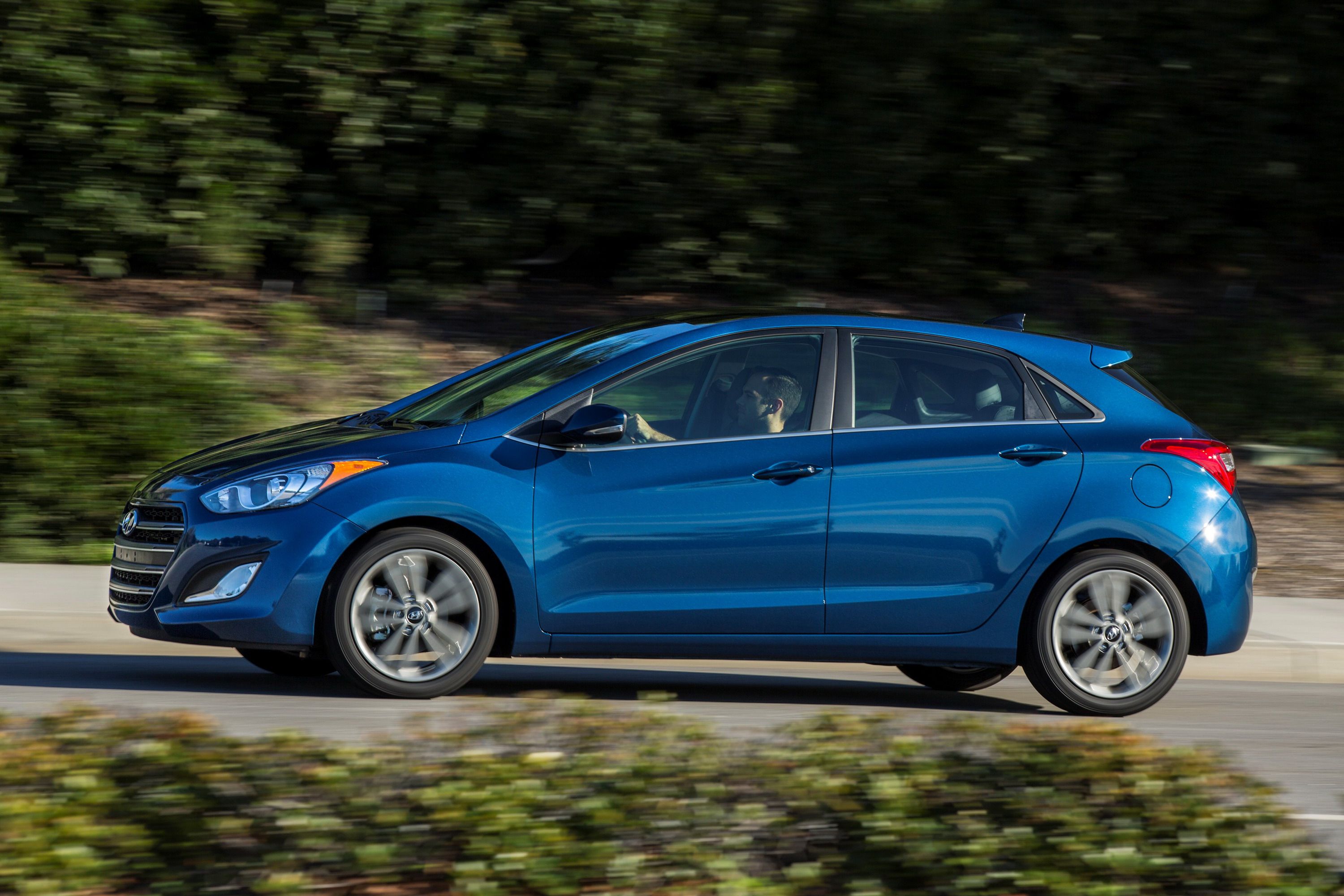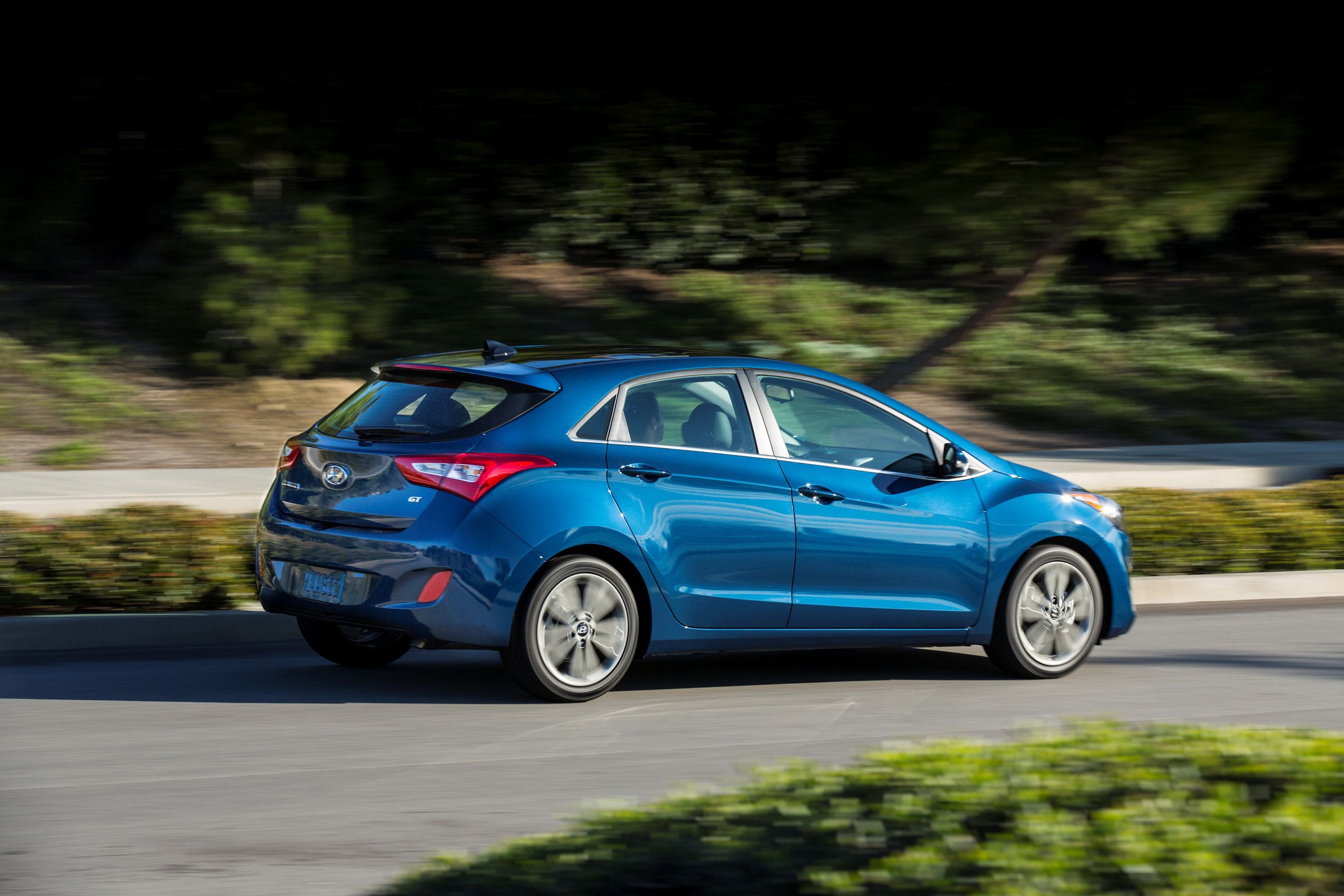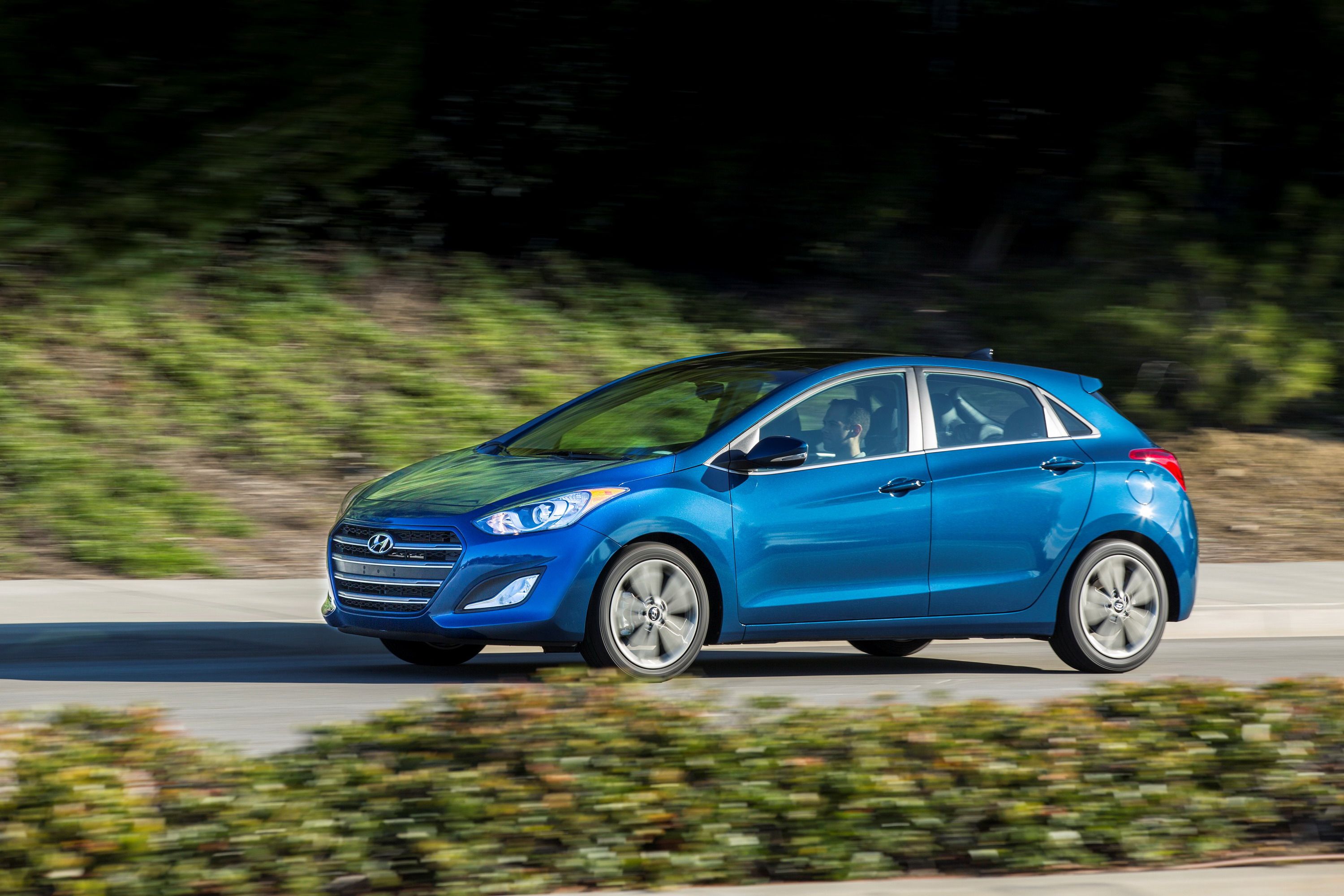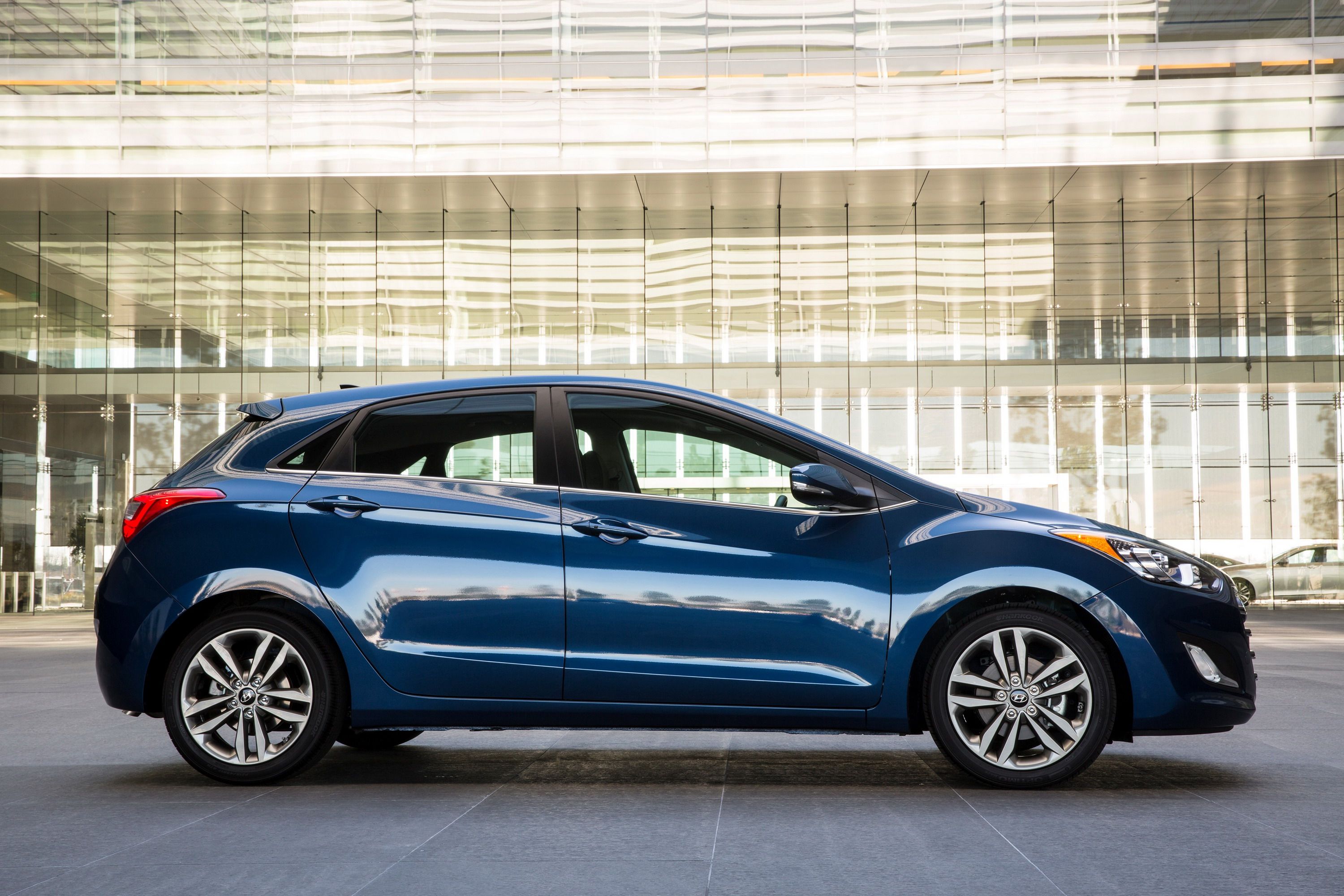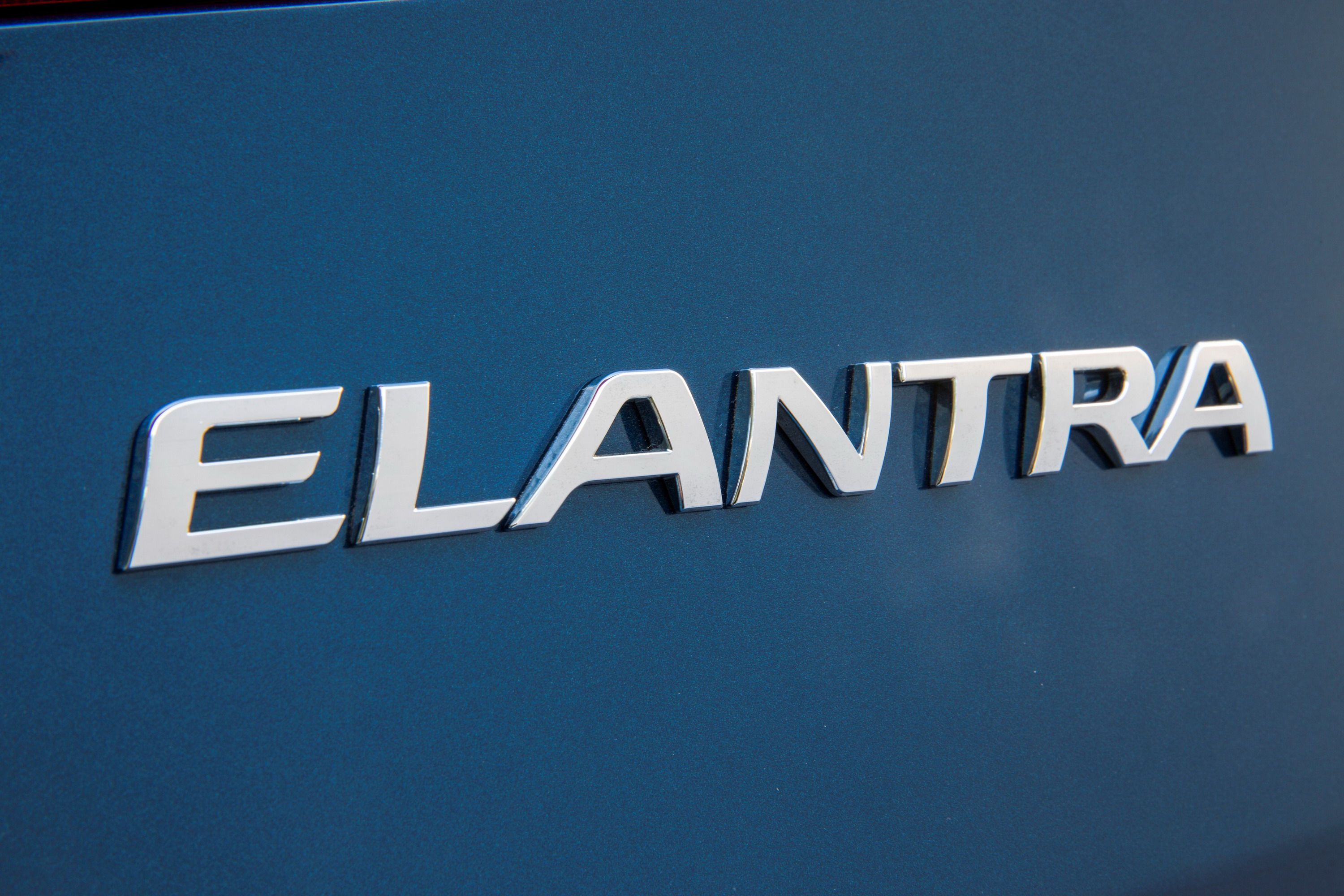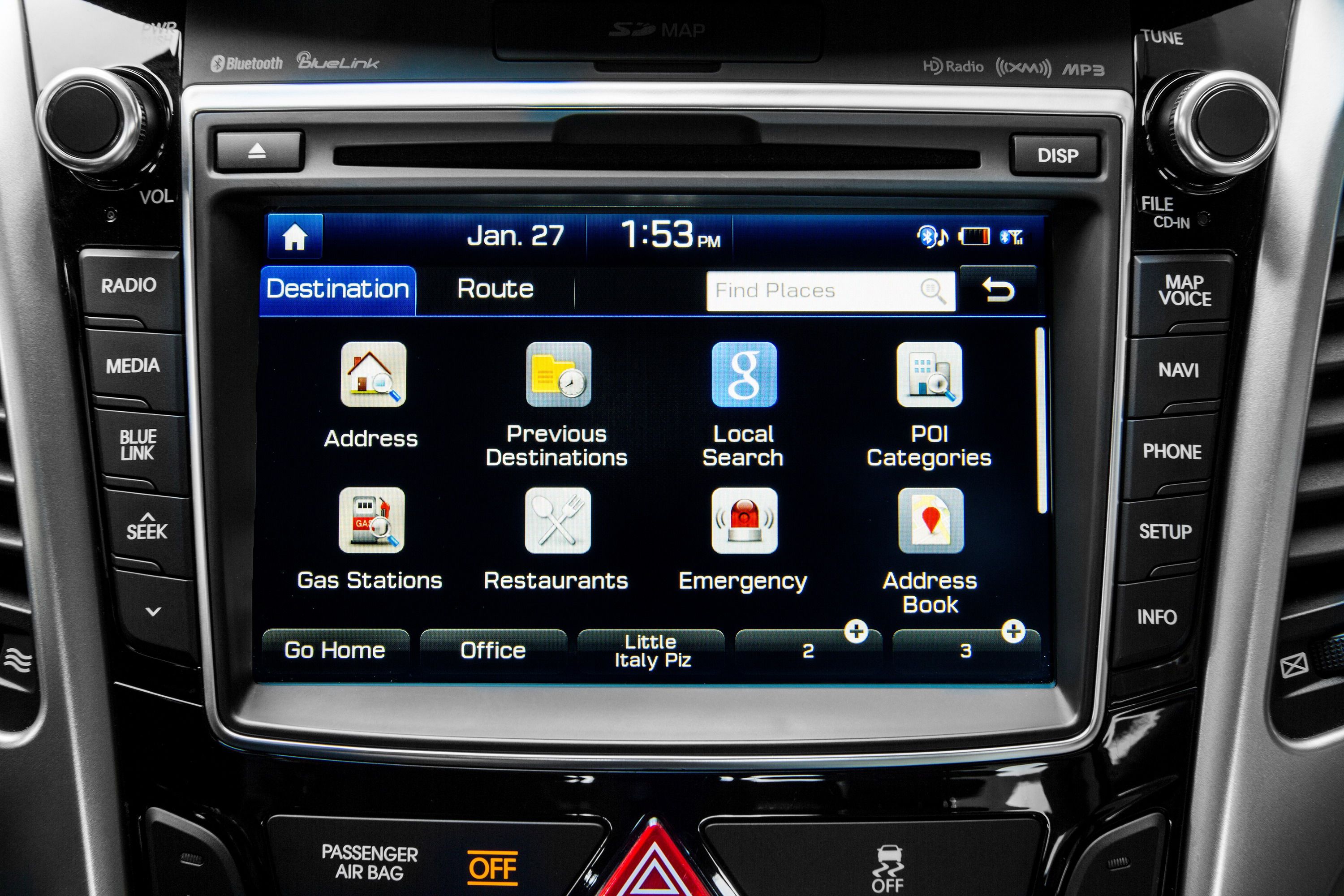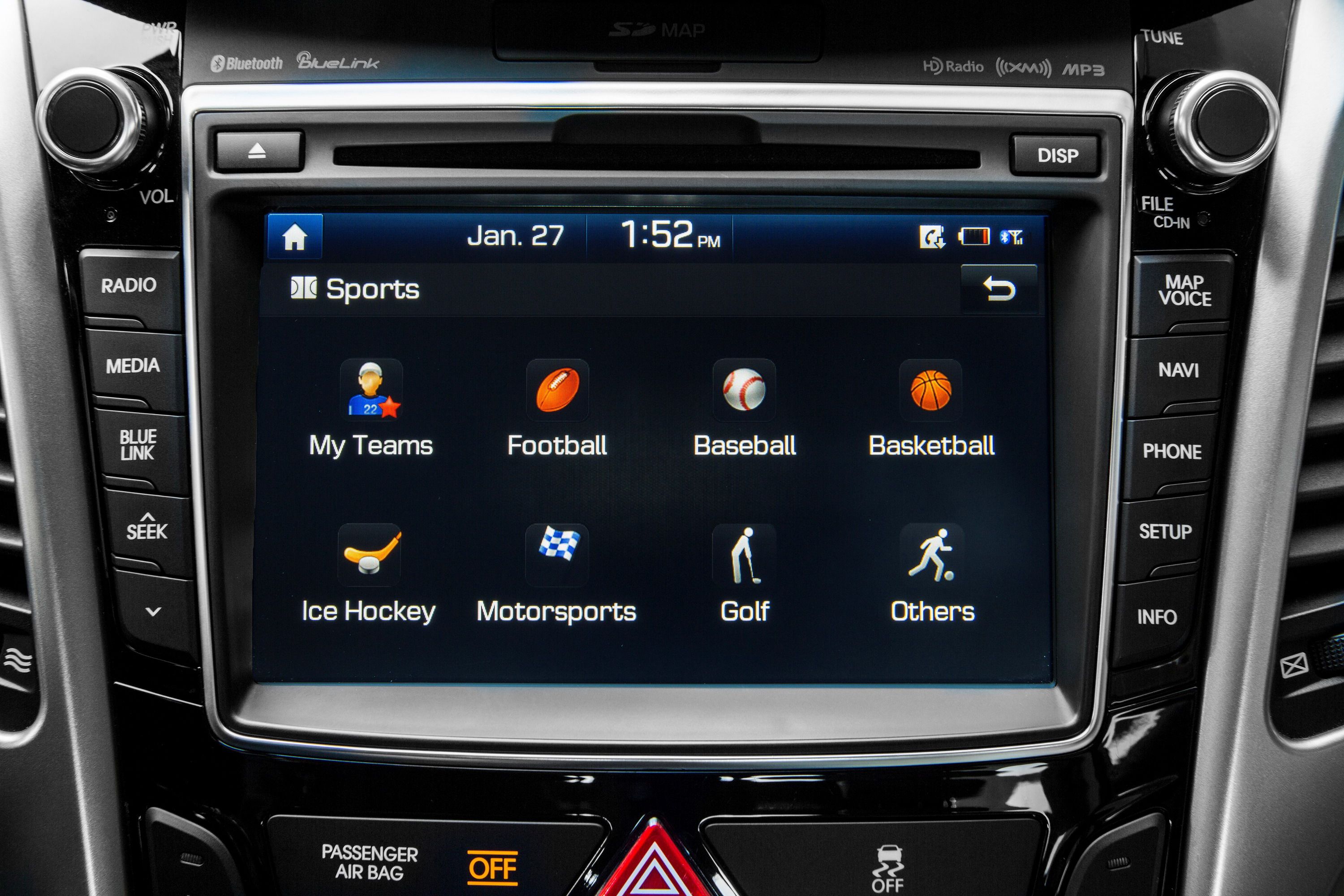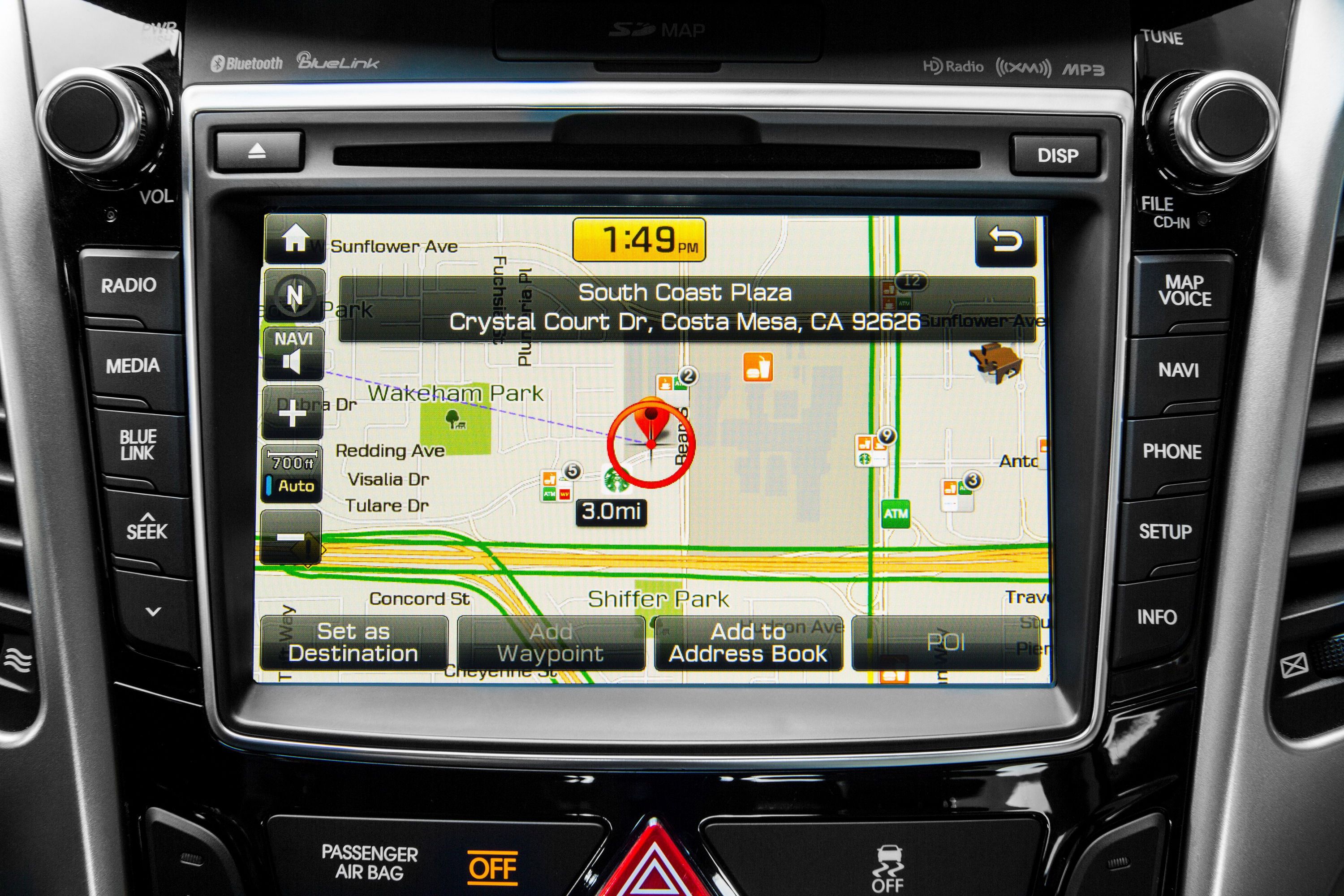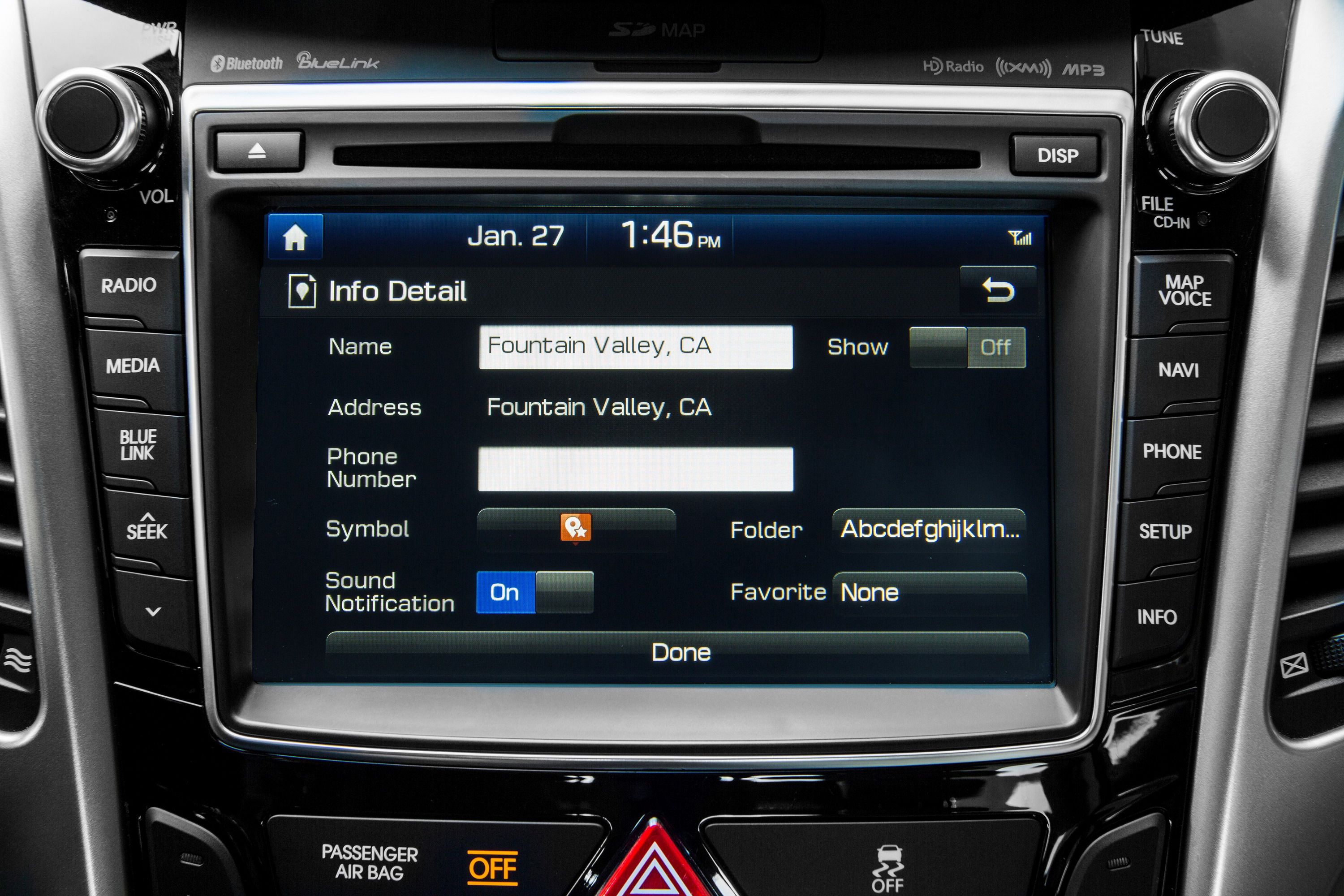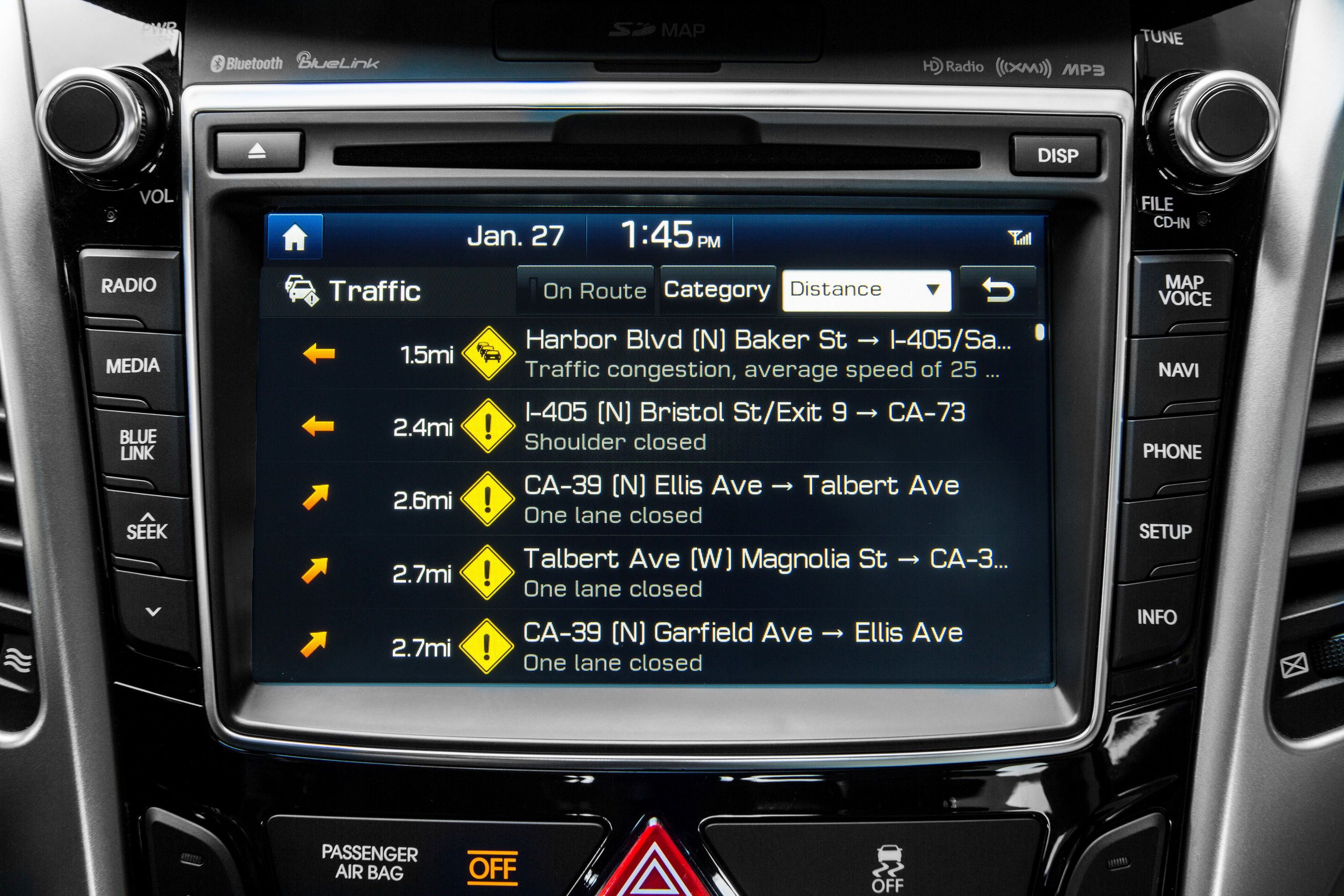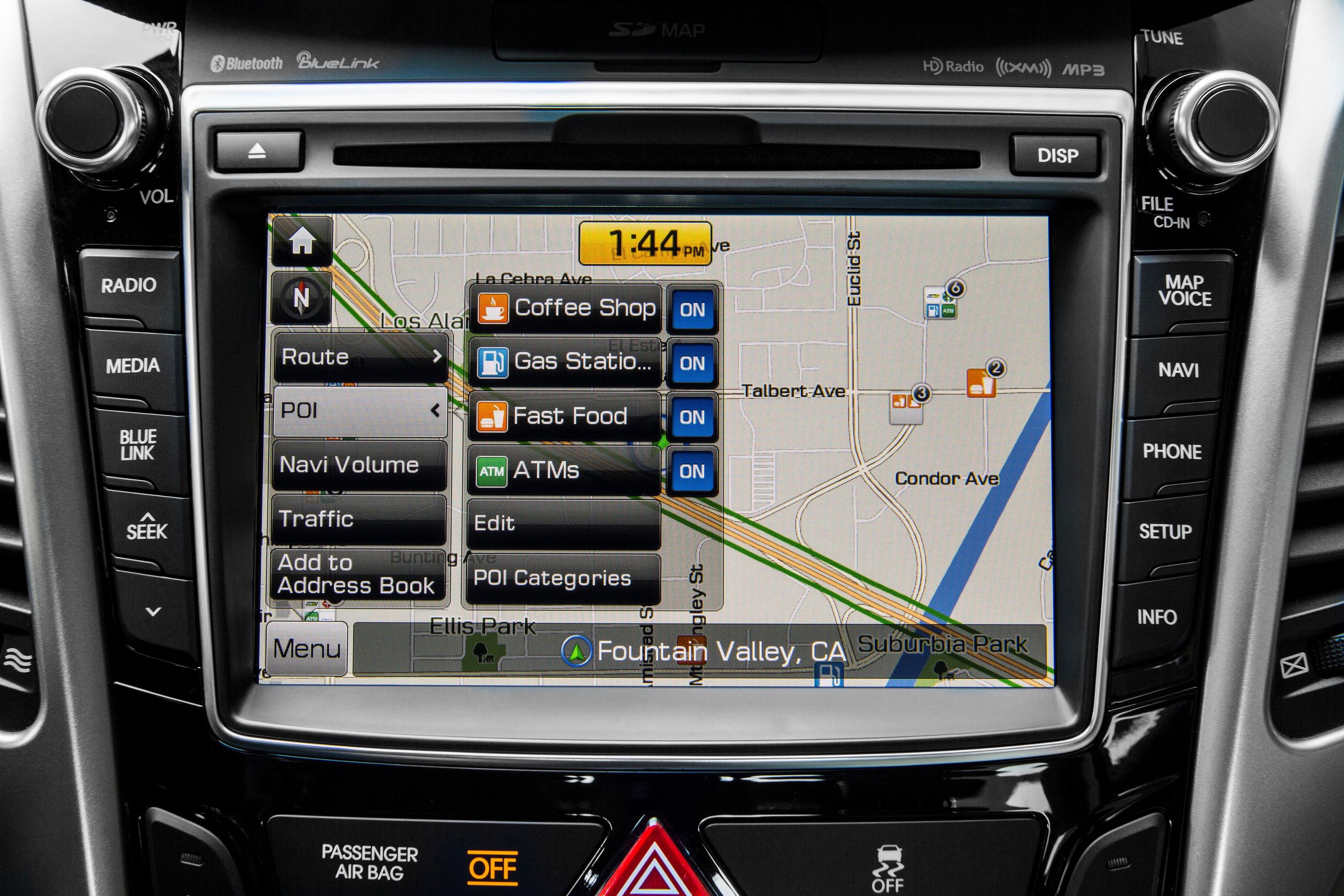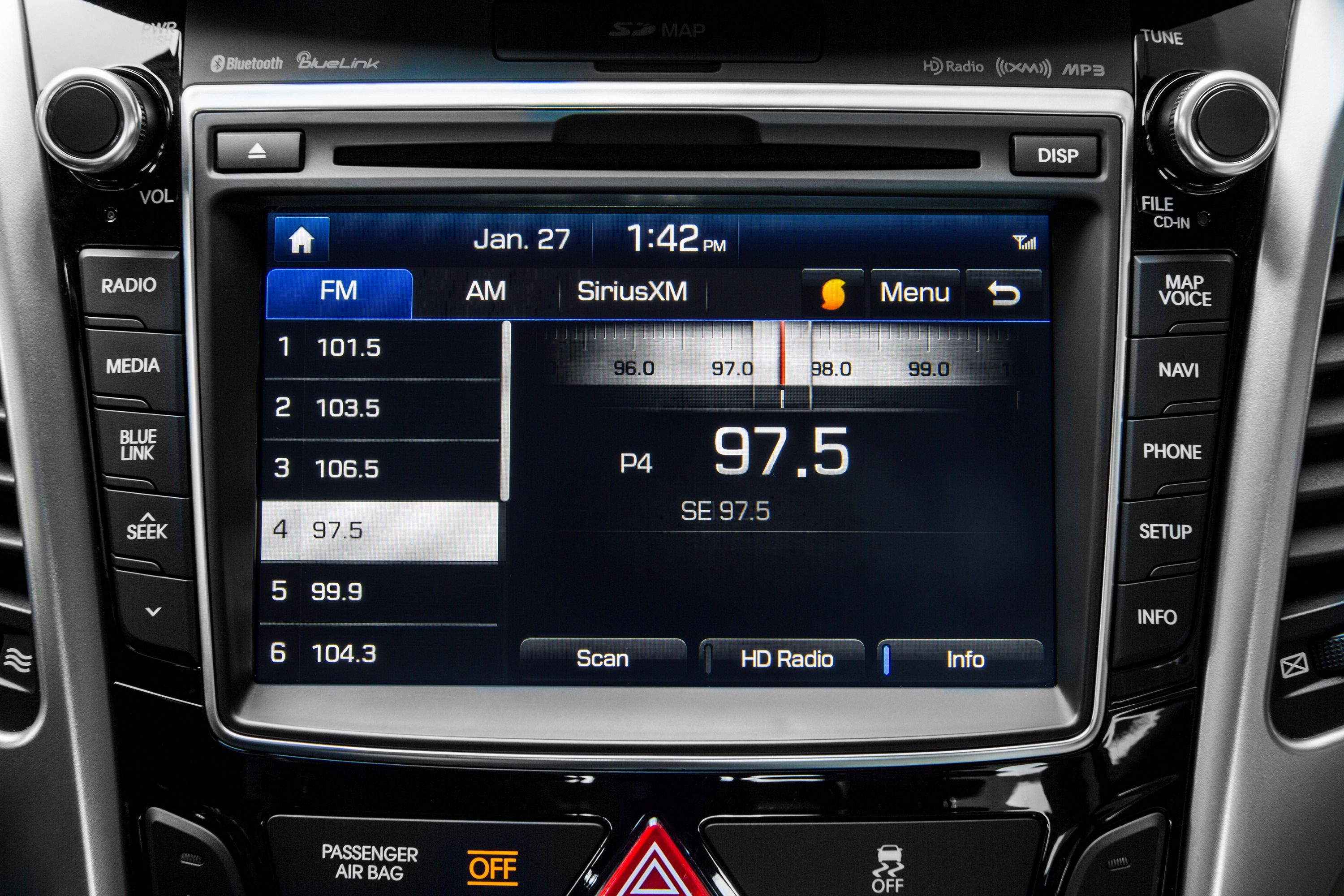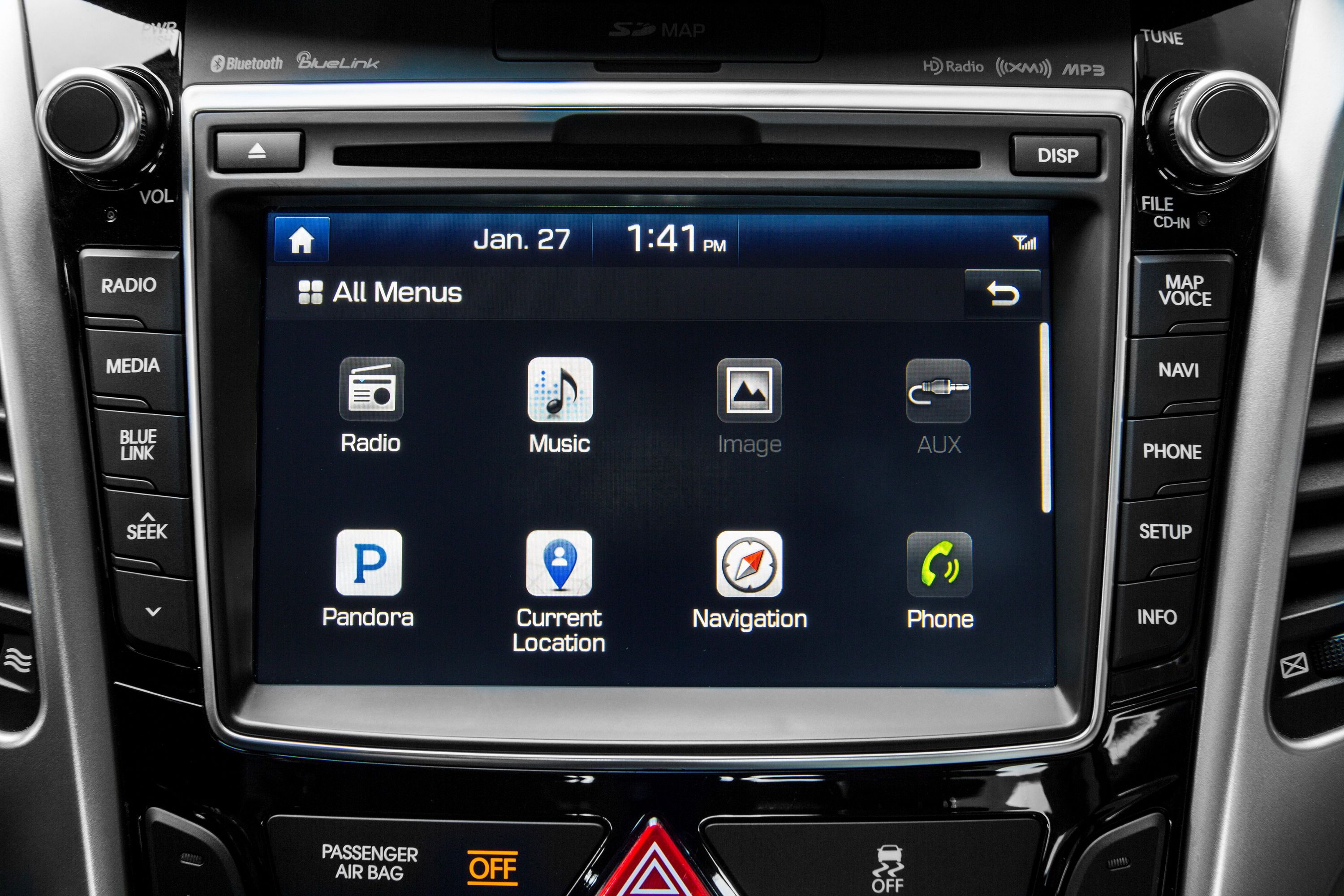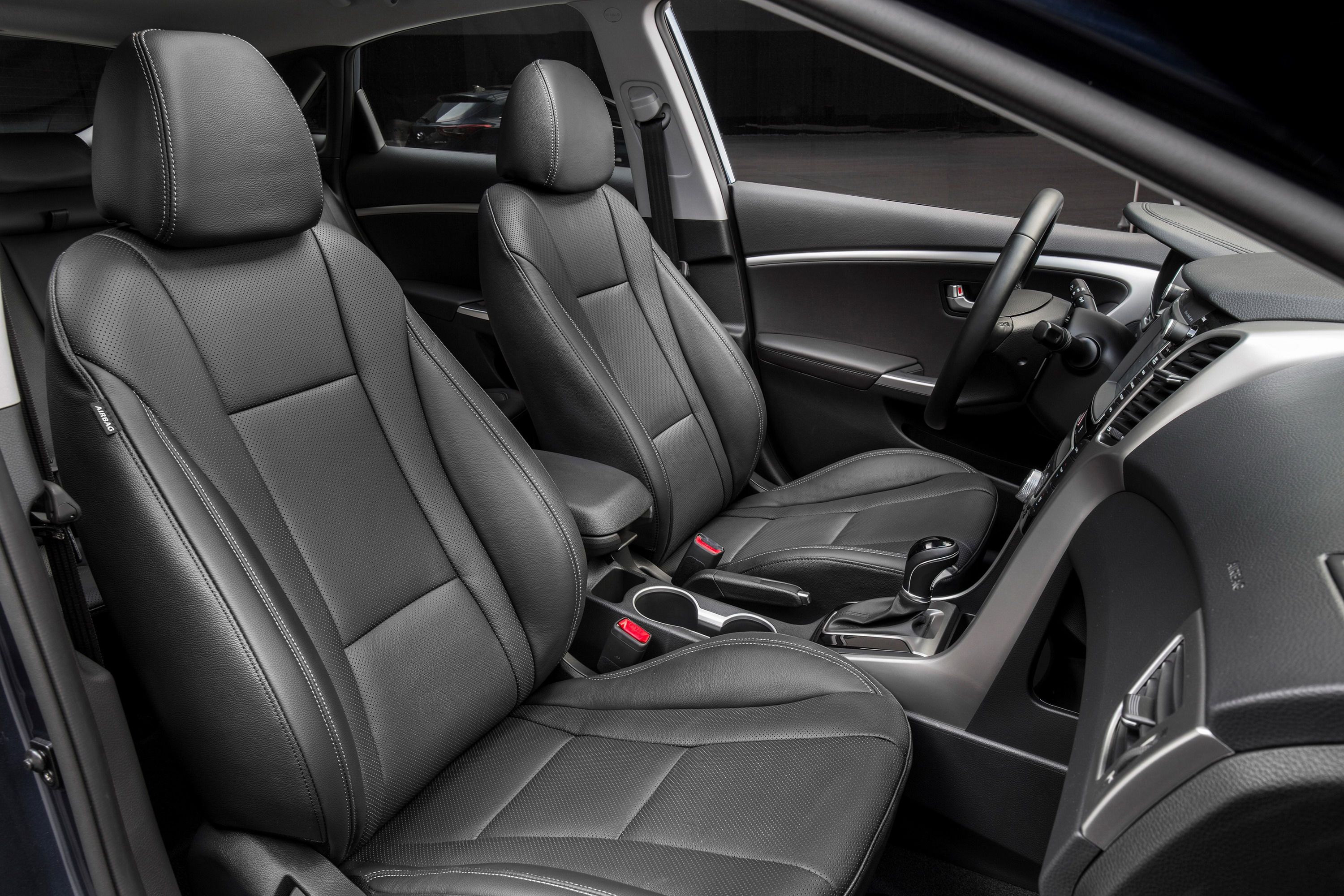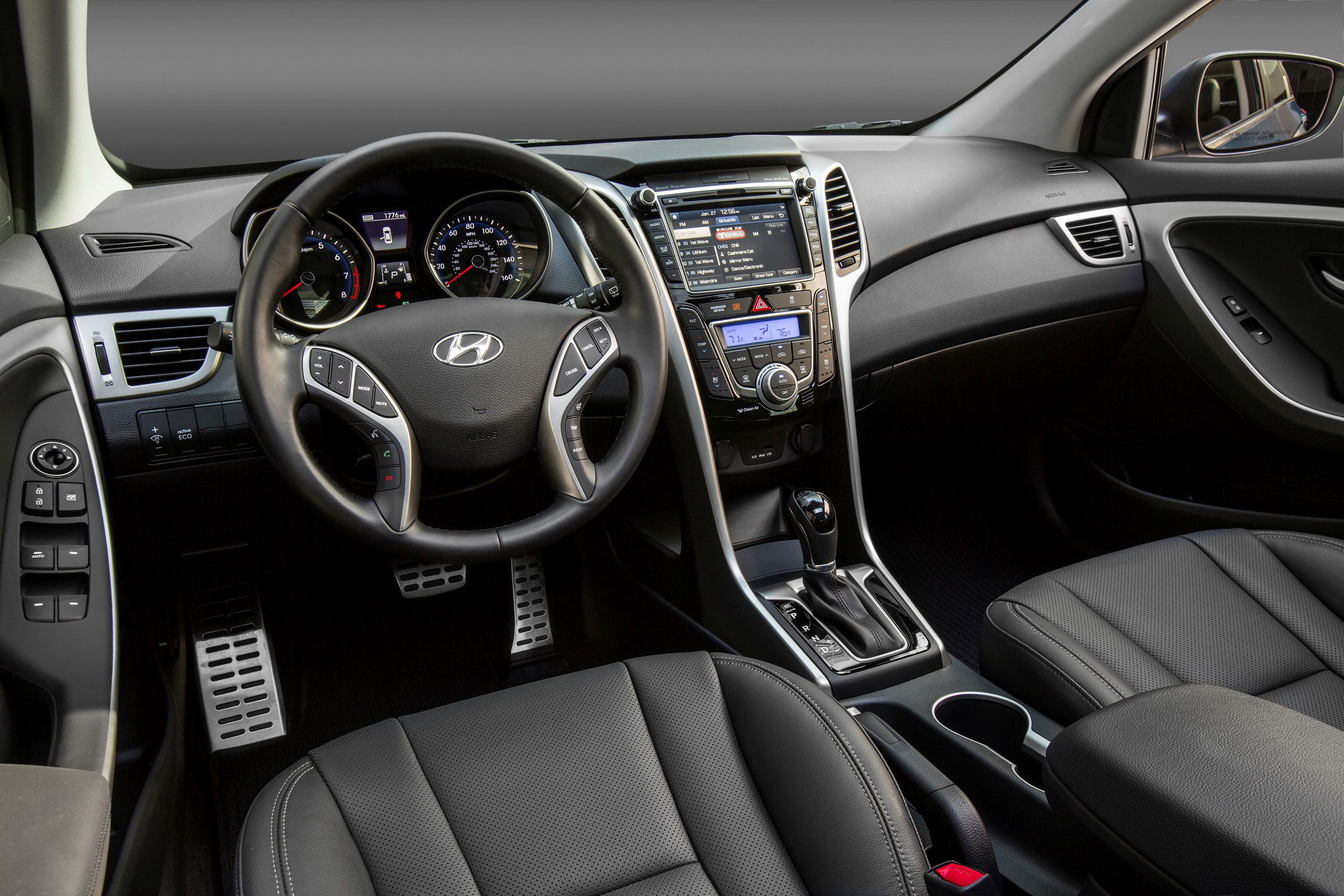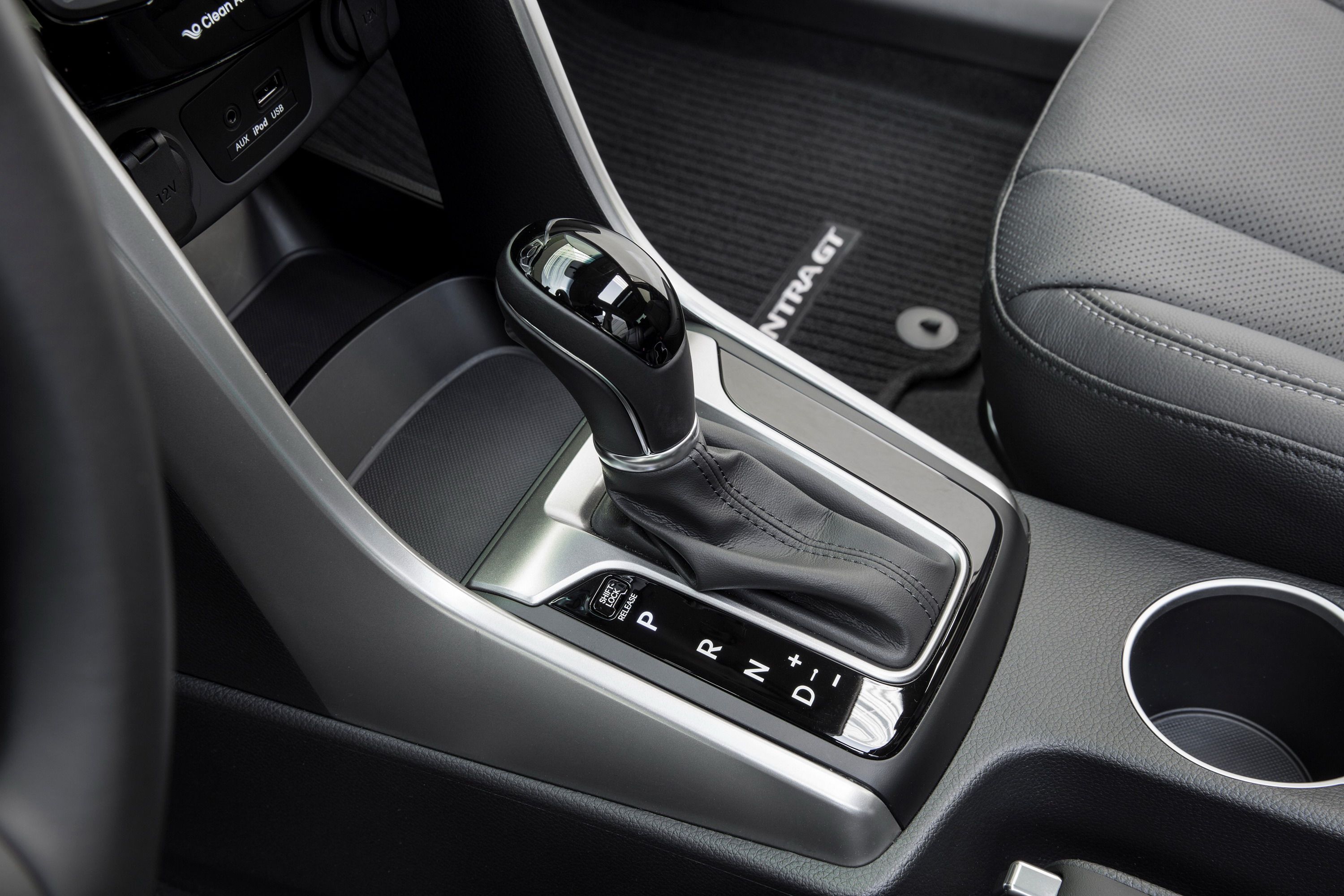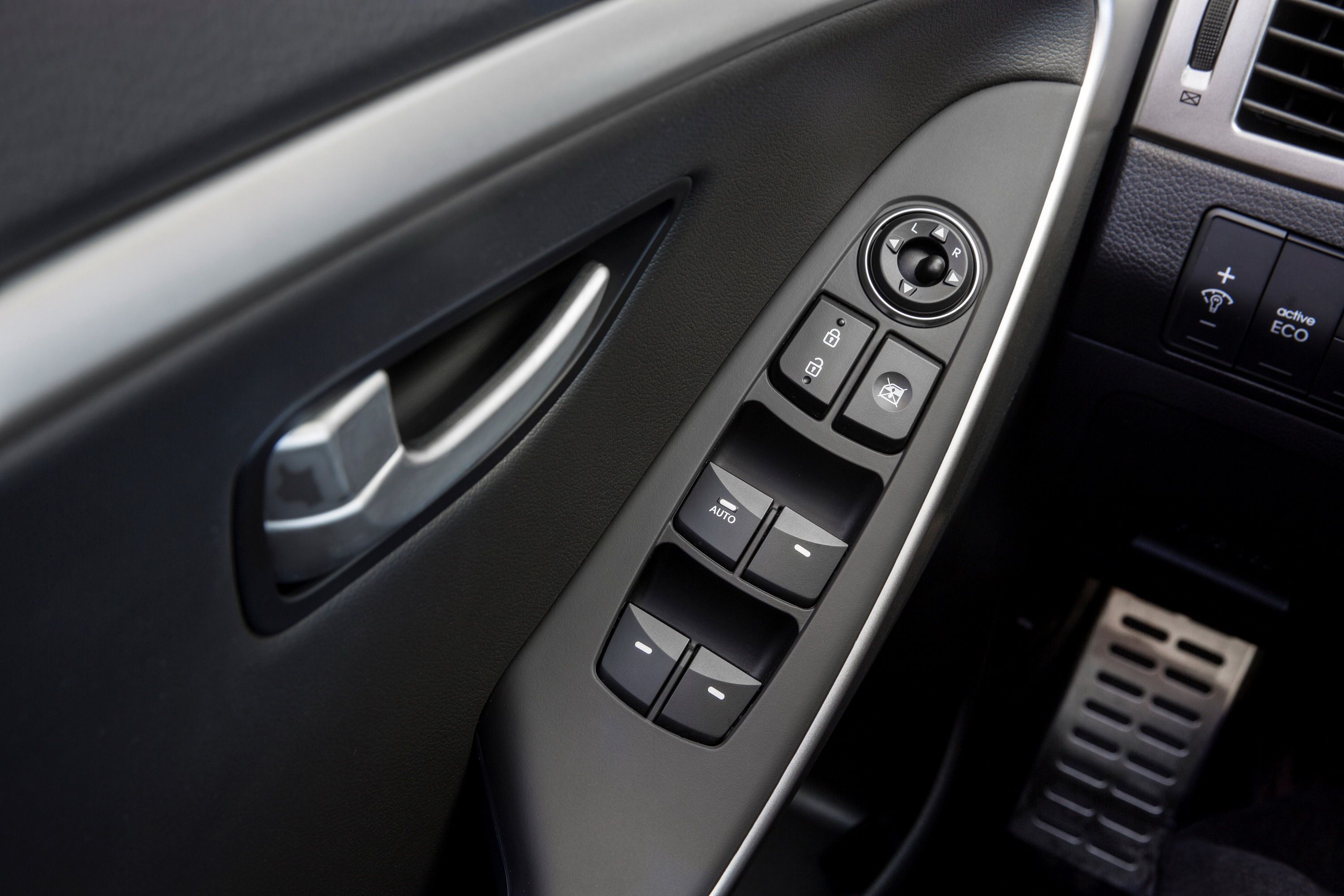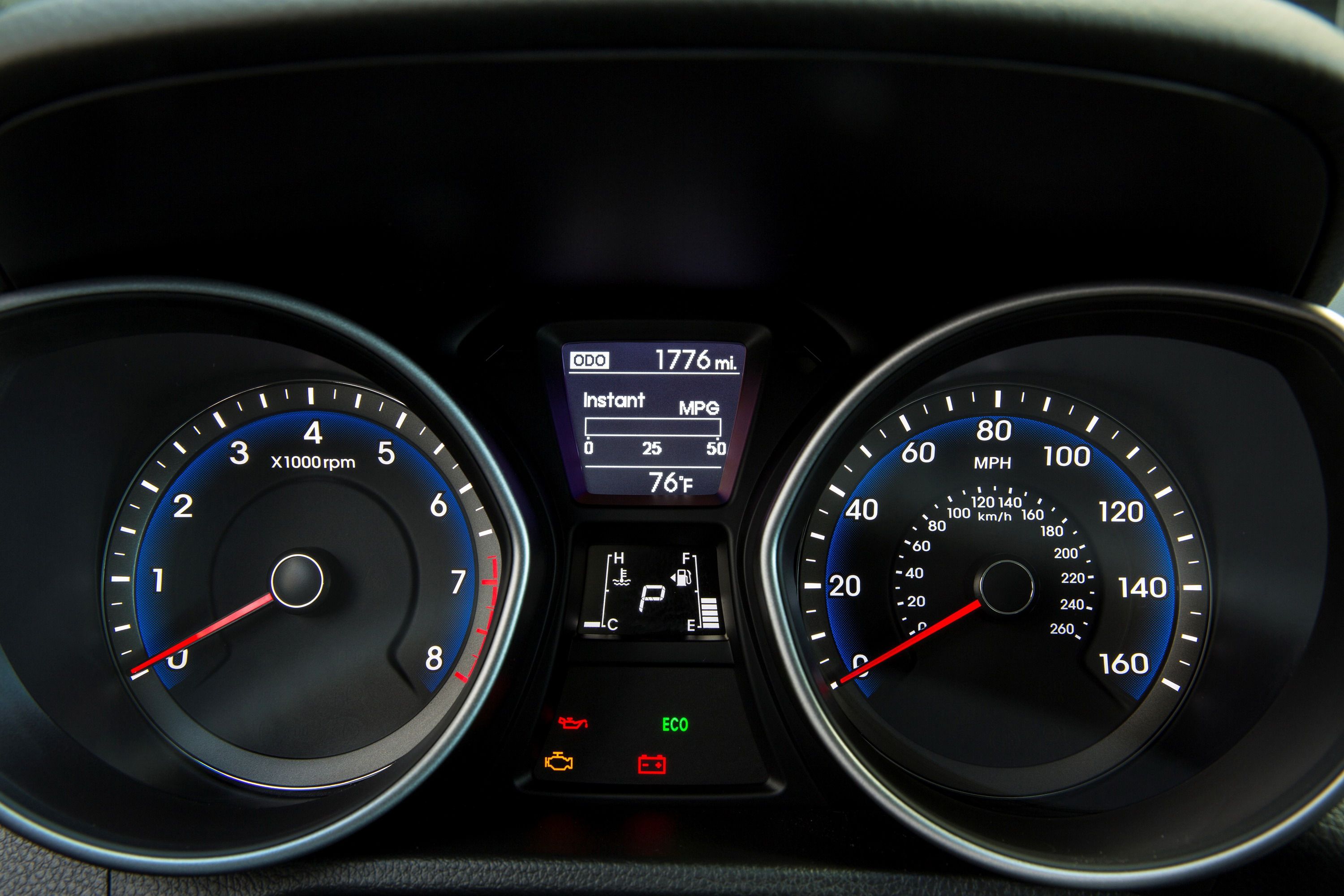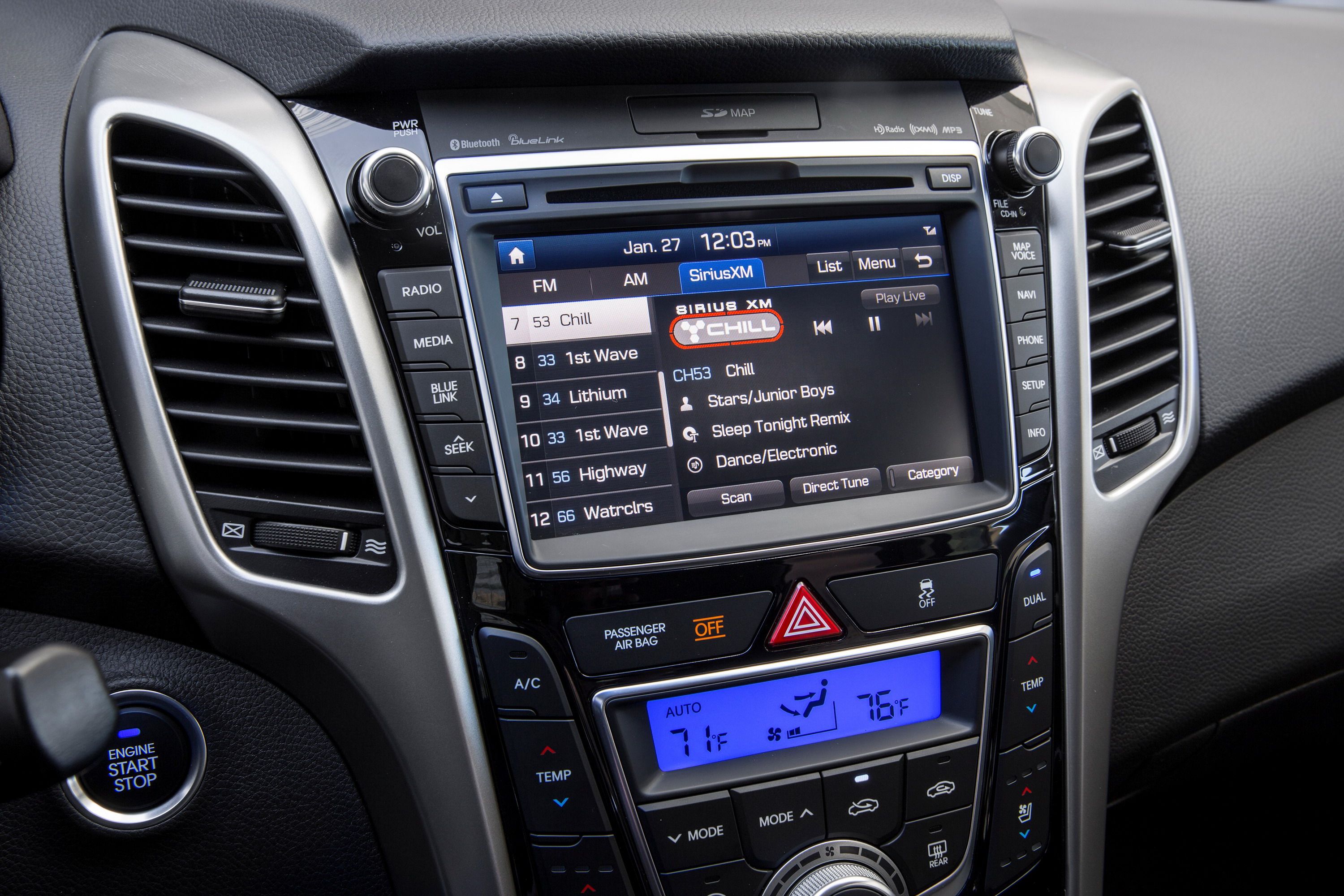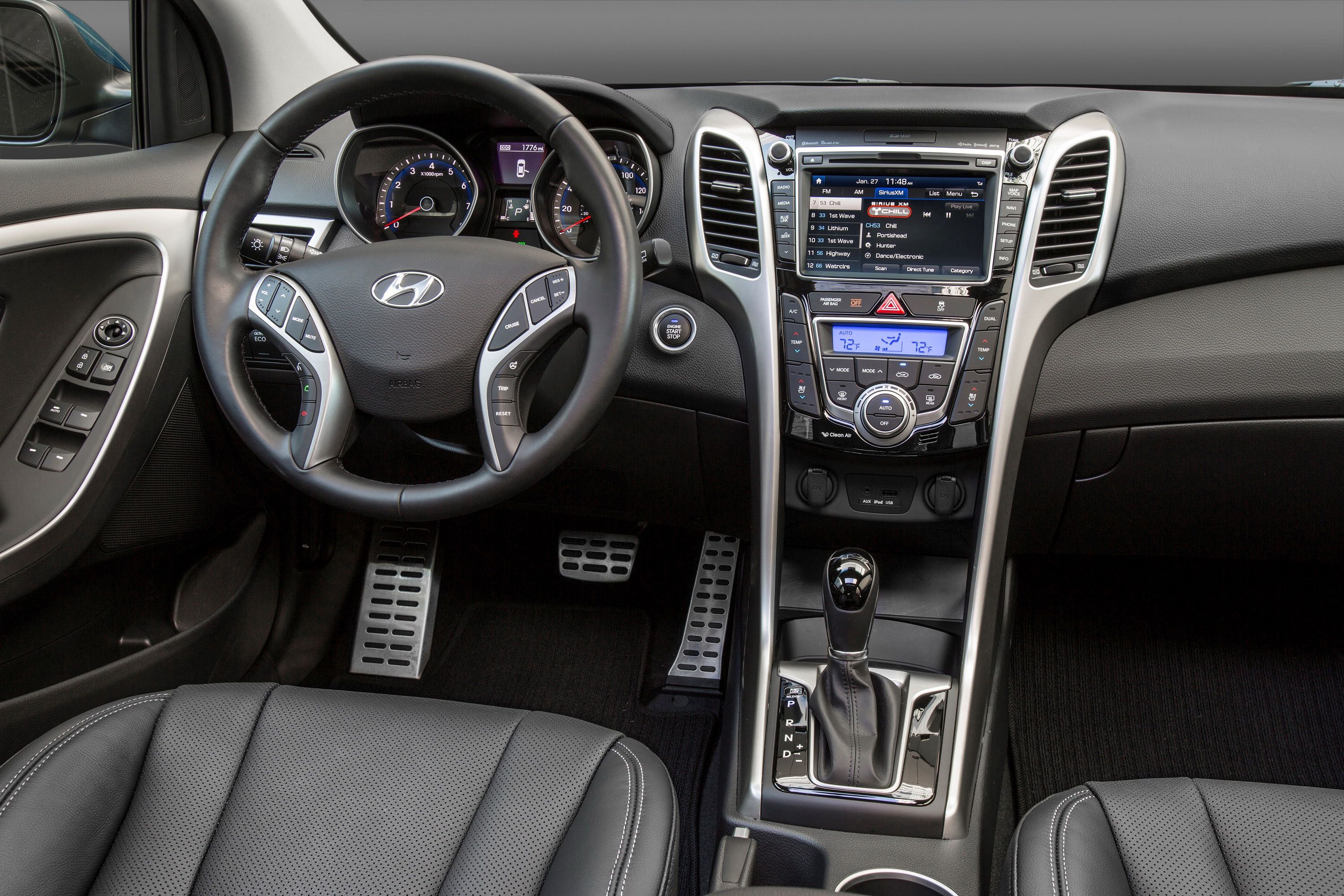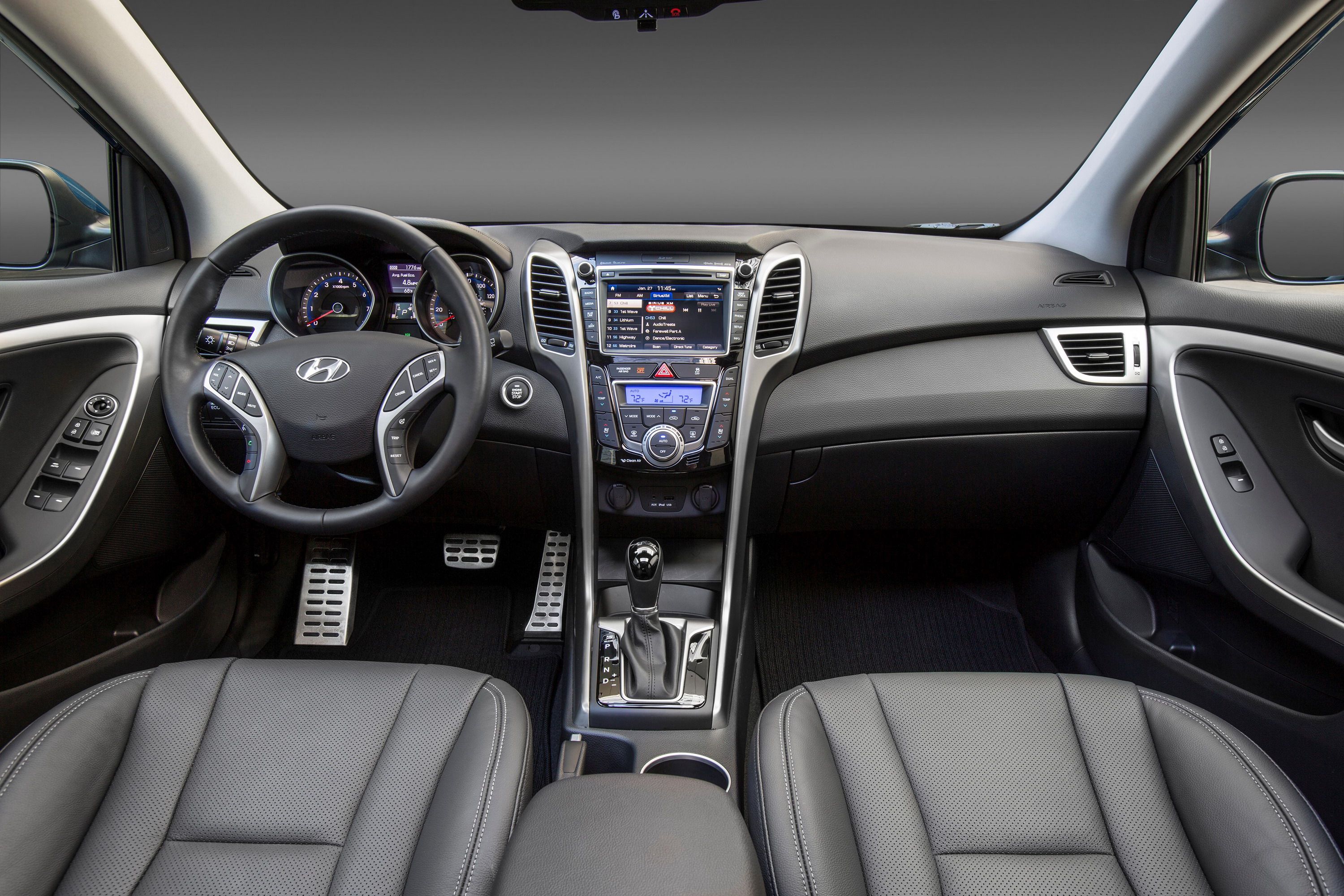The Elantra->ke1391 has been a huge part of Hyundai’s->ke201 evolution from a throwaway company in the early 1990s to a legit contender in the mid-2010s. As we enter the 2016 model year, the Elantra has earned its stripes and is now cross-shopped against the likes of the Focus,->ke440 Golf,->ke164 and Mazda3. For the 2016 model year, Hyundai decided to give the Elantra GT – the hatchback version – a mild refresh.
Hyundai revamped the nose of the Elantra GT, and added some technical gadgets and gizmos in an attempt to keep buyers flocking to Hyundai dealers instead of Nissan,->ke62 Volkswagen,->ke94 or Ford.->ke31
Are these updated looks and new options enough to keep the Elantra in the top-four in sales for 2015?
Click past the jump to read my full review and find out.
hyundai-elantra-gt
- Make: Array
- Model: hyundai-elantra-gt
2016 Hyundai Elantra GT
- Make: Array
- Model: 2016 Hyundai Elantra GT
- Engine/Motor: inline-4
- Horsepower: 173 @ 6500
- Torque: 154 @ 4700
- Transmission: 6-speed manual
Exterior
For 2016, Hyundai gave the Elantra a pretty hefty nose job, eliminating the dual-element grille with the crossbar and installing a unit that uses horizontal slats from top to bottom. Additionally, the grille gets a angular outline, replacing last year’s rounded edges. This gives the Elantra GT a more mature and refined look, something the brand has been spreading across its entire lineup.
That new grille works very well with the rest of the Elantra’s body, which carries over unchanged otherwise. The only other change of note is the new set of 17-inch wheels in what Hyundai calls a “euroflange” design.
On a whole, the Elantra GT remains as sporty and stylish as it was last year, thanks to its sharp body lines, chrome beltline, and optional LED taillights. It’s just a little more refined than it was before.
2015 Elantra GT vs. 2016 Elantra GT
Exterior Dimensions
|
Wheelbase |
104.3 Inches |
|
Overall length |
169.3 Inches |
|
Overall width |
70.1 Inches |
|
Overall height |
57.9 Inches |
|
Tread Width (front/rear) |
16”: 61.0/61.5 Inches |
|
Overhang |
34.6/30.3 |
|
Minimum Ground Clearance |
5.5 |
|
Coefficient of Drag |
0.30 |
Interior
On the inside, the changes to the 2016 Elantra GT are limited to optional equipment. These include ventilated front seats, an available next-gen navigation system with HD radio and Siri, and a next-generation Blue Link system with remote start, climate control, and destination search.
Other than those options, the Elantra GT continues to offer the same, spacious cabin it always has. This includes 96 cubic feet of passenger space for its five occupants and 51 cubes of maximum cargo room. Despite being right in the middle of its class in terms of cargo and passenger room, the Elantra GT leads the class in front and rear shoulder room.
The Elantra GT also has plenty of room for all the odds and ends, including a sunglasses holder, front and rear cup holders, door-panel bottle holders, a cooled glove box, a good-sized center console storage area, a front storage tray, and front seatback pockets.
On upscale trim levels, the Elantra GT also gets plenty of high-end equipment, including a 7-inch touchscreen and dual-zone climate control. What’s more, heated seats are included in all Elantra GT models, as is a 172-watt audio system with AM/FM/SiriusXM capabilities and Bluetooth streaming audio.
Interior Dimensions
|
Head room |
|
|
Front |
40.1 Inches |
|
Rear |
37.9 Inches |
|
Leg room |
|
|
Front |
42.0 Inches |
|
Rear |
34.6 Inches |
|
Front |
|
|
Front |
55.9 Inches |
|
Rear |
54.9 Inches |
|
Rear |
|
|
Front |
53.1 Inches |
|
Rear |
51.0 Inches |
Drivetrain
Powering the 2,904-pound Elantra GT is the same 2.0-liter Nu GDI engine that delivers 173 horsepower at 6,500 rpm and 154 pound-feet of twist at 4,700 rpm. This engine has been slightly reworked to deliver better torque between 4,000 and 5,500 rpm, to help out when merging into highway traffic.
The engine mates to a standard six-speed manual transmission or the optional Shiftronic auto transmission with manual mode, to deliver power to the front wheels. I have a Kia Forte 5 with the same auto transmission, and I can say that I have used the manual mode only a handful of times, and see no benefit to it. The programming of the automatic shifts seems superior to the manual mode.
EPA testing puts the 2016 Elantra GT at a not-too-hot 24 mpg city, 33 mpg highway, and 27 mpg combined. These numbers are pretty subpar for the class, but I have noted that my Forte 5 with the same drivetrain typically hovers closer to the 30 mpg combined mark. Since getting in some hot water with the EPA for inaccurate test results, Kia and Hyundai both have been understating their mpg ratings a bit, so you might see better mpg in the real world.
In most testing, the 2015 Hyundai Elantra GT and Kia Forte 5 sprinted to 60 mph in the eight-second range, and I expect this to remain the same in the 2016 model year.
Drivetrain Specifications
|
Type |
DOHC D-CVVT (Dual Continuously Variable Valve Timing) |
|
Materials |
Aluminum block and head |
|
Displacement |
2.0L / 1,999 cc |
|
Horsepower (estimated) |
173 HP @ 6,500 RPM (ULEV) |
|
Torque (estimated) |
154 LB-FT @ 4,700 RPM (ULEV) |
|
Valves per cylinder |
4 |
|
Bore & stroke |
81.0 x 97.0 (mm) |
|
Compression Ratio |
11.5:1 |
|
Fuel economy |
6-speed manual: 24 mpg/33mpg/27mpg |
Braking and Handling
The Elantra GT doesn’t just look sportier than its sedan sibling, its suspension is tuned to feel a little livelier too. I am not saying it’s a hot-hatch, but it is a little more fun to drive.
The GT’s suspension includes a 22 mm front stabilizer bar to help tone down the body roll, higher spring rates, a stiffer twist beam, and retuned Sachs dampers. The suspension’s playfulness is transmitted to the road by an eager set of 215/45R17 tires.
Carrying over from last year, and one of my favorite parts of the Forte 5 and Elantra GT, is the Driver Selectable Steering Mode. This allows the driver to choose from three preset steering modes -- normal, comfort, and sport – depending on preferences and driving conditions. While normal mode is, well, normal, comfort loosens things up a bit and reduces feedback through the wheel. Sport, on the other hand, tightens the steering significantly and delivers more feedback for a better connection to the road.
Prices
The 2016 Elantra GT will start from $18,800, plus $825 freight charge, and head upward from there. Moving into the automatic transmission jump the base price up to $19,800.
Pricing Details
|
Model |
Price |
|
Elantra GT 6-speed manual |
$18,800 |
|
Elantra GT 6-speed automatic |
$19,800 |
Packages
|
GT M/T Style Package |
$1,975 |
|
GT A/T Style Package |
$1,975 |
|
GT A/T Tech Package |
$3,950 |
Options
|
First aid kit FK |
$30 |
|
Cargo net CN |
$50 |
|
Wheel locks WL |
$55 |
|
Rear bumper appliqué RP |
$70 |
|
Mudguards MG |
$95 |
|
Cargo tray CT |
$95 |
|
Carpeted floor mats CF |
$125 |
|
Luggage box kit LB |
$145 |
|
Lower checker flag graphic GC |
$195 |
|
Auto-dimming mirror with Homelink® HL |
$275 |
|
Cross rails RC |
$295 |
|
Remote engine start RK |
$350 |
Competition
Mazda3 Hatchback
The Mazda3 is far and away the sportiest and sexiest hatchback available today, and few would argue with me on that.
In the engine department, the Mazda has a few benefits over the Hyundai, but also one shortcoming. You can choose between two engines with the 3. First up is the standard 2.0-liter Skyactiv-G engine with 155 horses and 150 pound-feet of torque. Sure this is far less powerful than the standard Elantra GT, but its 30 mpg city and 40 mpg highway rating crush the Hyundai. The optional engine is the 2.5-liter Skyactiv-G, which trumps the Hyundai at 184 horsepower and 185-pound-feet of torque, and it still beats it with EPA ratings as high as 28 mpg city and 39 mpg highway with the optional i-ELOOP system.
The Mazda also hangs tough with the Hyundai in pricing, as it bases at just $18,945, but it peaks much higher, at $26,495 for the fully loaded s Grand Touring trim.
Ford Focus Hatchback
For 2015, the Focus gets a new front end as well. Like the Elantra GT’s new face, this gives the Focus a more mature appearance. I am still deciding if the looks suits the youthful attitude of the Focus, but that decision is in the eye of the beholder.
Under the Focus’ hood is a 2.0-liter four-cylinder that puts down 160 horsepower and 146 pound-feet of torque. Doing the sifting is a five-speed manual or a six-speed PowerShift (read: dual-clutch) transmission that delivers power to the front wheels. With the auto transmission, the 2015 Focus delivers 27 mpg city and 40 mpg highway, while the manual checks in with 26 mpg city and 36 mpg highway. Optional on the Focus is a 1.0-liter EcoBoost three-cylinder that turns in 123 ponies and 148 pound-feet of twist. This engine mates exclusively to a six-cog manual and delivers 29 mpg city and 40 mpg highway.
Ford also offers electric and ST versions of the Focus, but those compete in their own distinct classes so aren't considered here.
The Focus Hatchback starts out at $18,960 and climbs to $23,670 in its range-topping Titanium trim.
Conclusion
The Hyundai Elantra GT is a great car, but it definitely has its flaws. The biggest of its flaws is that its price is so close to those of the Mazda3 and the Focus. Sure, the brand has come a long way in recent years, but pricing it along with the big boys of the segment is rather brave. That said, this refresh does give the Elantra a bolder and more-refined look that may help buyers look beyond the emblem on the hood and hatch. Additionally, at its base price, the Elantra has many more premium features than any of its competitors.

